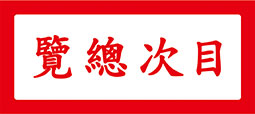A piece of calligraphy, painting, seal or ink stone is always more revered when the creator or owner is acknowledged for high moral character. A seal and ink stone used by Wen T’ien-hsiang (文天祥 1236-1283), a sheet of words by Fang Hsiao-ju (方孝孺 1357-1402), a scroll or album leaf by a loyalist in dynastic change, they are all cherished as the most precious of art works by generations of collectors. In recent Chinese history, calamities have been recurrent. Even though the spirits of the martyrs and the virtuous are invoked by their extant works, most Chinese are just survivors of calamities themselves, disconcerted and uninformed, they are unable to recognize their intrinsic values. Mr. Wu made huge contributions to the Kuomintang Party and the Republic of China without any official posting, finally, he used his burial at South Sea to urge the swift recovery of mainland China from the communists. On the 70th death anniversary of Mr. Wu, we hereby exhibit his personal seal and family letters, hoping they can help a new generation to understand his ideas.
Curatorial and Editorial Department
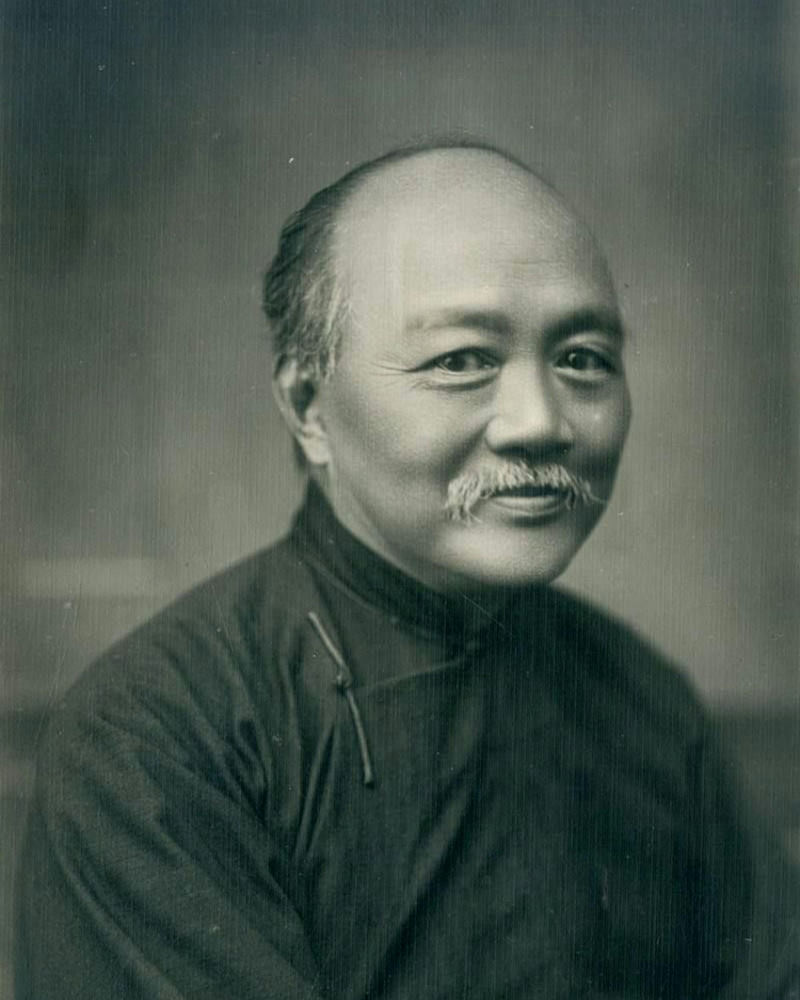
Portrait of Mr. Wu Ching-heng
Seventy years ago, at 7:30 am on the morning of 1 December in the 42nd year of the Republic (1953), the cremains of the eminent founding statesman Wu Ching-heng (吳敬恒) were flown from Taipei Songshan Airport (臺北松山機場) to Kinmen (金門) and from there, transferred to a fishing boat and taken to the waters between Kinmen proper and Little Kinmen for sea burial. The presidents of the Five Yuans (Executive Yuan, Legislative Yuan, Judicial Yuan, Examination Yuan and Control Yuan), escorted the cremains for send-off at Songshan Airport and President Yu You-ren (于右任 1879-1964) of the Control Yuan bade farewell, saying:
“Today, we follow your final wish to be buried in the South Sea. May your cremains transform into hundreds of millions of national spirits, in order to save the hundreds of millions of our compatriots who are facing ever harsher sufferings and greater calamities.”
Mainland China has now fallen. It is indeed a spirited and courageous mission to cross the strait and liberate the country!
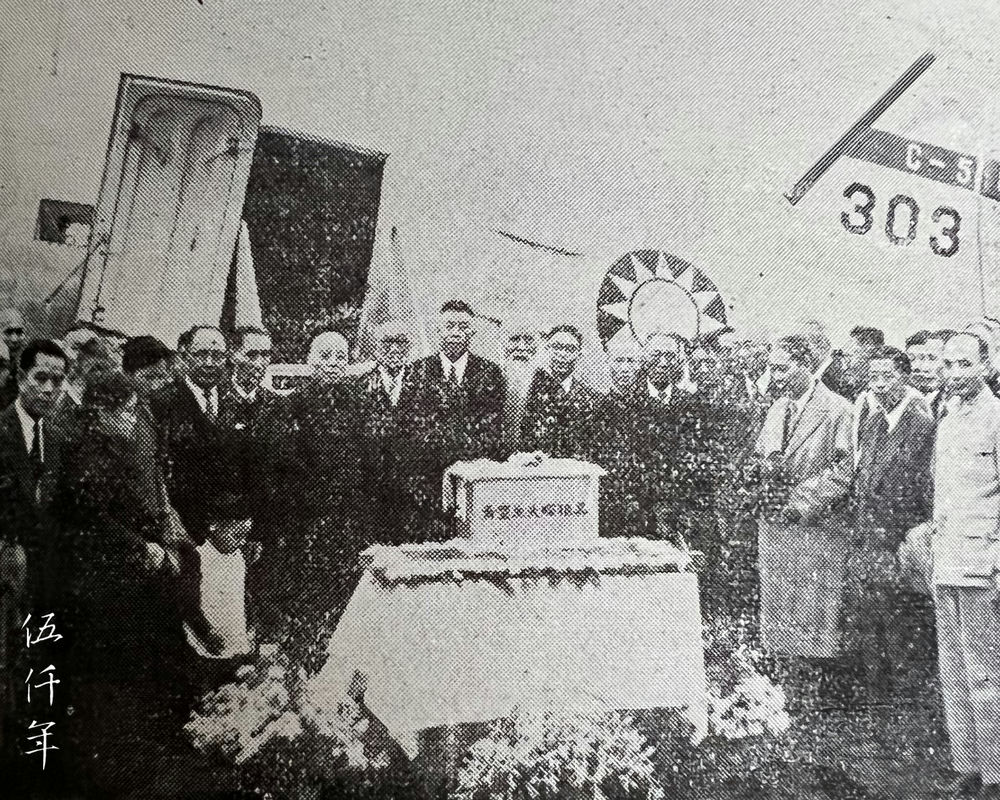
The presidents of the Five Yuans escorted the cremains of Wu Ching-heng for send-off at Songshan Airport
The following day, on 2 December in the 42nd year of the Republic (1953), Minister Chang Ch’i-yün (張其昀 1901-1985) published The Spirit of Mr. Wu in Central Daily News (中央日報), expounding on the significance and lesson of the sea burial:
“Today, the Chinese Nationalist Party (also known as China’s Kuomintang) with Mr. Wu’s final wish, laid his cremains to rest in the South Sea of the Republic of China. The poem by Lu Yu (陸游 1125-1210) goes:
The day the royal army wins the north,
Central Plain is recovered then at last.
Forget not to tell your father’s spirit
At the family ritual of ancestor worship.
(王師北定中原日,家祭無忘告乃翁)
This poem is sorrowful and stirring. Mr. Wu was a great thinker, and naturally his spirit was bolder and more assertive. The poem of the revered Korean general Yi Sun-sin (李舜臣 1545-1598) says:
I vow the fishes and dragons of the sea will rise,
I swear my devotion is known to grass and trees.
In the 38th year of the Republic, during the Sino-Korean talks in Chen-hai (中韓鎮海會談), President Rhee Syngman (李承晚 1875-1965) wrote these two lines as a gift for President Chiang Kai-shek (蔣介石總統 1887-1975). Mr. Wu’s will for cremation and sea burial embodies the meaning of this oath. His aspiration was intense and fervent, he wished to stir up a new wave in the Pacific to wash away the humiliation of the loss of the country. Now he would not be able to personally witness the flags of the Republic of China in retaking the mainland, however his intention was to transform his cremains into countless National Flags of the Blue Sky and White Sun, to lead our vast and mighty army forward.
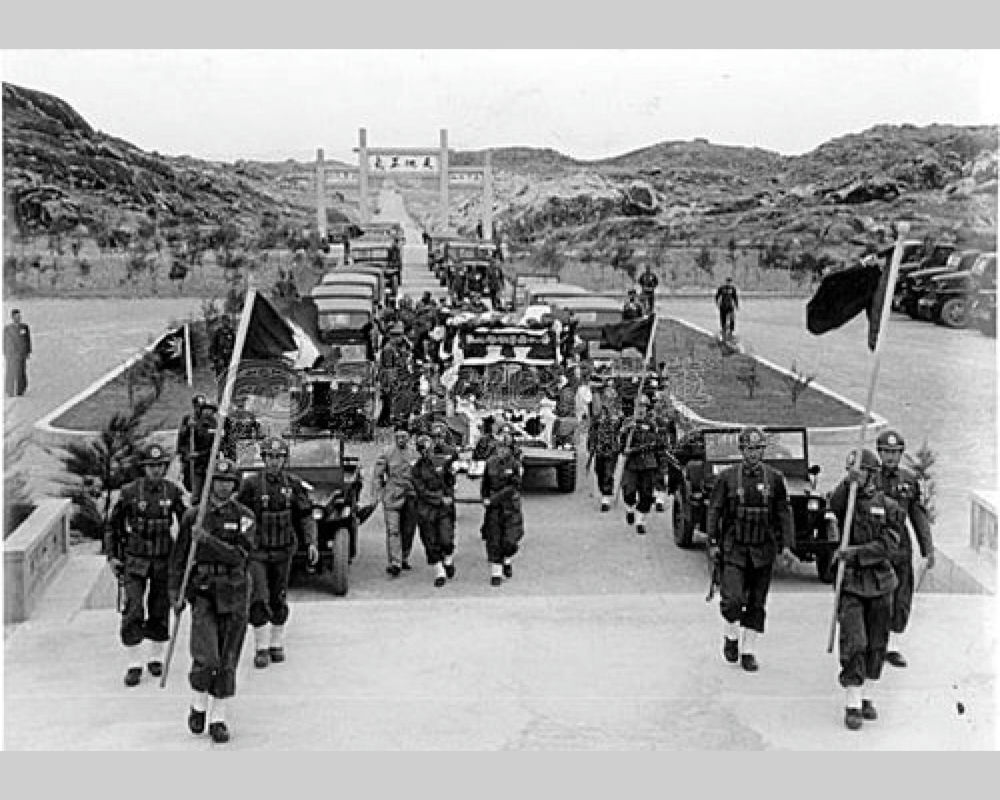
The hearse carrying the cremains of Wu Ching-heng arriving at the beach of Kinmen
Kinmen is currently the frontline of our national forces and also the strongest bastion in our resistance against the Chinese communists and Soviet puppeteering. Today at noon, we will hold a state funeral in the Kinmen Bay, at the foot of Mount Taiwu. In terms of its spirit, this sea burial is the most important and solemn oath-swearing ceremony before the counterattack for retaking the mainland. It is in the same spirit and in the same tradition as the oath-swearing ceremony before the launch of the Northern Expedition (1926-1928). Our loyal and brave soldiers, our valiant youth, must carry on the spirit of defending our homeland, raise high the banner of revolution, march forward with zeal and courage. In the near future, we will surely land across the coasts of Kinmen, advance to the maritime capital Chin-ling (金陵 also known as Nanking 南京), reach the inland capital Chin-cheng (金城 also known as Lan-chou 蘭州), and finally majestically march towards the distant northwest frontier of the Sino-Russian border at Mount Chin-shan (金山 also known as the Altai Mountains 阿爾泰山). We will fight for the Three Principles of the People which embodies Of the People, By the People, For the People! We shall eradicate communism which is against Of the People, against By the People, against For the People. Only by quelling the red scourge, restoring our divine land, and reclaiming the integrity of our territory and independence of our sovereignty, can we console the spirits of our founding father and the esteemed founding heroes of our nation.”

The cremains of Wu Ching-heng being carried in the State Funeral Vessel to sea, with Mr. Chiang Ching-kuo on board
The will of Wu Ching-heng was published in Taiwan Shin Sheng Daily News on 1 December in the 42nd year of the Republic (1953):
“In_Year_Month_Day, following the order of the President and the will of__ ,Counsellor of the Presidential Office, the cremation shall be on _Month_Day in the_ Year of the Republic of China. The cremains shall be transported by sea vessel for a state funeral in the South Sea of the Republic of China. This is the command.
There shall be payment of one hundred dollars for the hire of a fishing boat. A flag shall be hoisted, stating ‘State Funeral Vessel’ and this shall be considered the sea vessel for state funeral.
The cremains shall be placed in a small earthenware container, securely fastened with rope.
At the time of casting the container into the sea, four musicians shall be engaged to play the national anthem (this can be omitted if this is a sea burial and not a state funeral). In this way the ceremony is of substance. It is dignified, but the cost is minimal, thus corresponding to the intention behind the cremation and sea burial.
Drafted at t’ien-ming shih-hou (天明時候 meaning “the time at dawn”) on 27 September in the 40th year of the Republic.”
The will was written in the 40th year of the Republic (1951). The four characters t’ien-ming shih-hou “the time at dawn” are indeed lasting motivational words to the world.
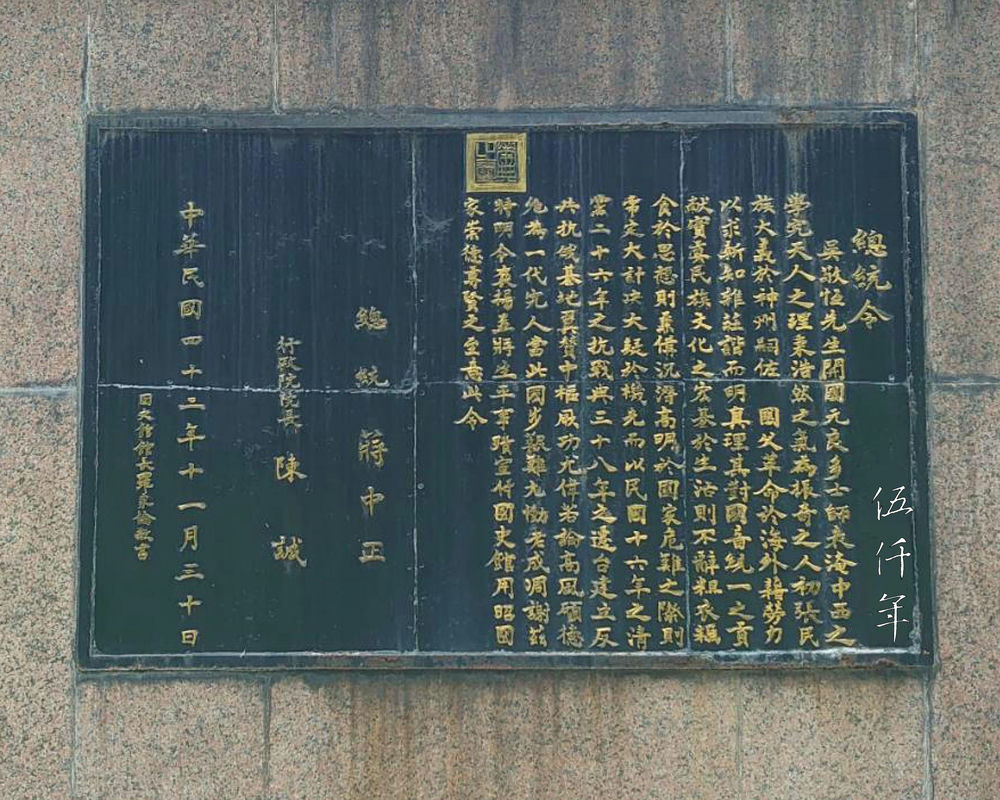
The Presidential Commendation Order in relief was affixed to the base of the Wu Ching-heng statue in Zhishan Park of Taipei
Wu Ching-heng was a statesman, an educator, and a philosopher. His lifelong dedication and integrity can be seen from the Presidential Commendation Order (總統褒揚令):
“Presidential Order:
Mr. Wu Ching-heng, a virtuous founder of the nation, a teacher of many men, was deeply versed in both Eastern and Western learnings. He studied natural and human principles and possessed a magnanimous spirit full of unique qualities. Initially he championed the cause of the country within China, then he assisted the Father of the Nation Dr. Sun Yat-sen overseas in the revolutionary cause. He sought new knowledge through hard work, he expounded truth with a blend of solemnity and humour. His contribution to the decree of using mandarin as the official dialect and the determination of mandarin pronunciation laid a solid foundation for national culture. In his daily life, he did not shun coarse clothing and simple food. In his ideas, he had depth and brilliance. During times of crisis for the country, he frequently formulated great plans, and made decisions on great quandaries ahead of time. In particular, regarding the events of cleansing the party of communists in the 16th year of the Republic, the War of Resistance Against Japanese Aggression in the 26th year of the Republic, relocating to Taiwan to establish the base to fight the Chinese communists and Soviet puppeteering in the 38th year of the Republic, such assistances he rendered to the central government made tremendous contributions. Considering his high moral character and noble virtues, he was an exemplar of his generation. At this difficult time for the nation, it is especially sorrowful to lose such a seasoned and accomplished figure. Therefore, this order is issued to commend him and to entrust his life’s achievements to the Academia Historia Office, as to demonstrate the nation’s objective to honour virtue and respect the venerable.
President Chiang Kai-shek
Premier Chen Cheng (陳誠)
30 November in the 42nd year of the Republic of China.”
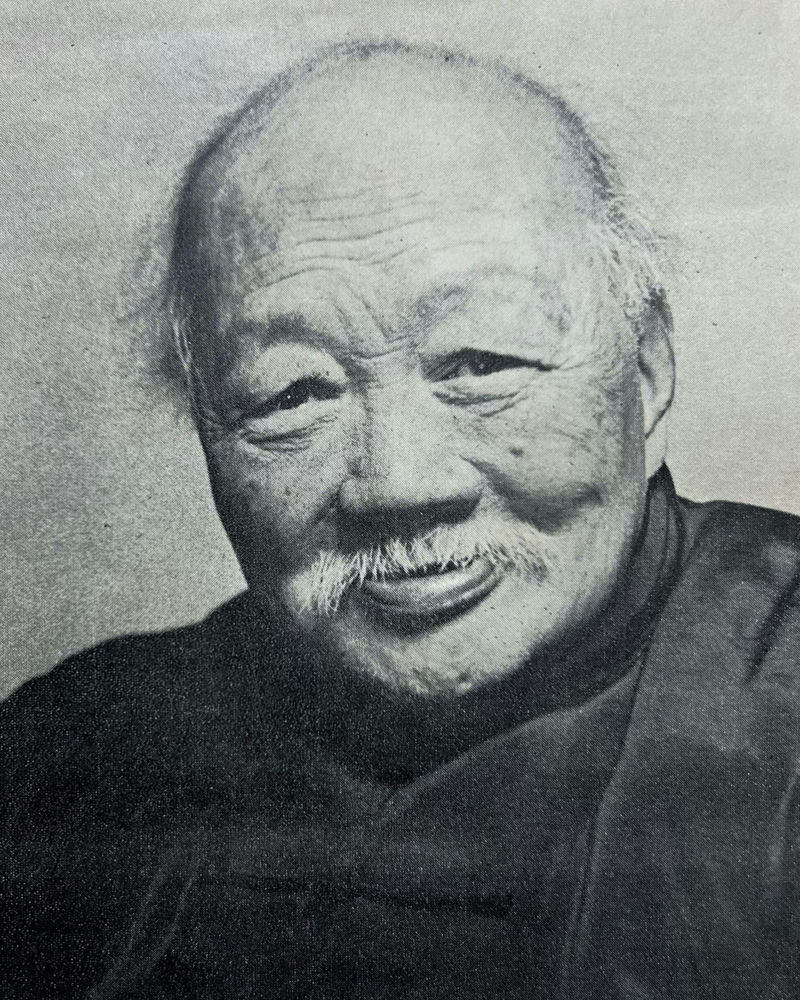
Portrait of Mr. Wu Ching-heng
Wu Ching-heng was born on 28 February in the 4th year of the T’ung-chih reign (23 March 1865 according to Gregorian Calendar). He passed away on 30 October in the 42nd year of the Republic of China (1953). His original name was Chi-ling (紀靈), also T’iao (眺), tzu Chih-hui (稚暉), he changed his name to Ching-heng (敬恒) when he was thirty four. His other tzu was Fei-an (朏盫), and in his later years, he used the hao Fei-an Lao-ren (朏盫老人). He was a native of Yanghu (陽湖), Kiangsu Province (江蘇). In the 8th year of the Kuang-hsü reign (1882), he enrolled in Nan-ching Academy (南菁書院) in Chiang-yin (江陰). In the 17th year of the Kuang-hsü reign (1891), he passed the provincial examination and attained the qualification of chü-jen (舉人). In the 19th year of the Kuang-hsü reign (1893), he entered Tzu-yang Academy (紫陽書院) in Su-chou (蘇州). In the 23rd year of the Kuang-hsü reign (1897), he became a teacher for the Chinese class in the Railway Department of P’ei-yang University (北洋大學堂) in T’ien-tsin (天津). In the following year, he held a similar position at Nanyang College (南洋公學) in Shanghai.
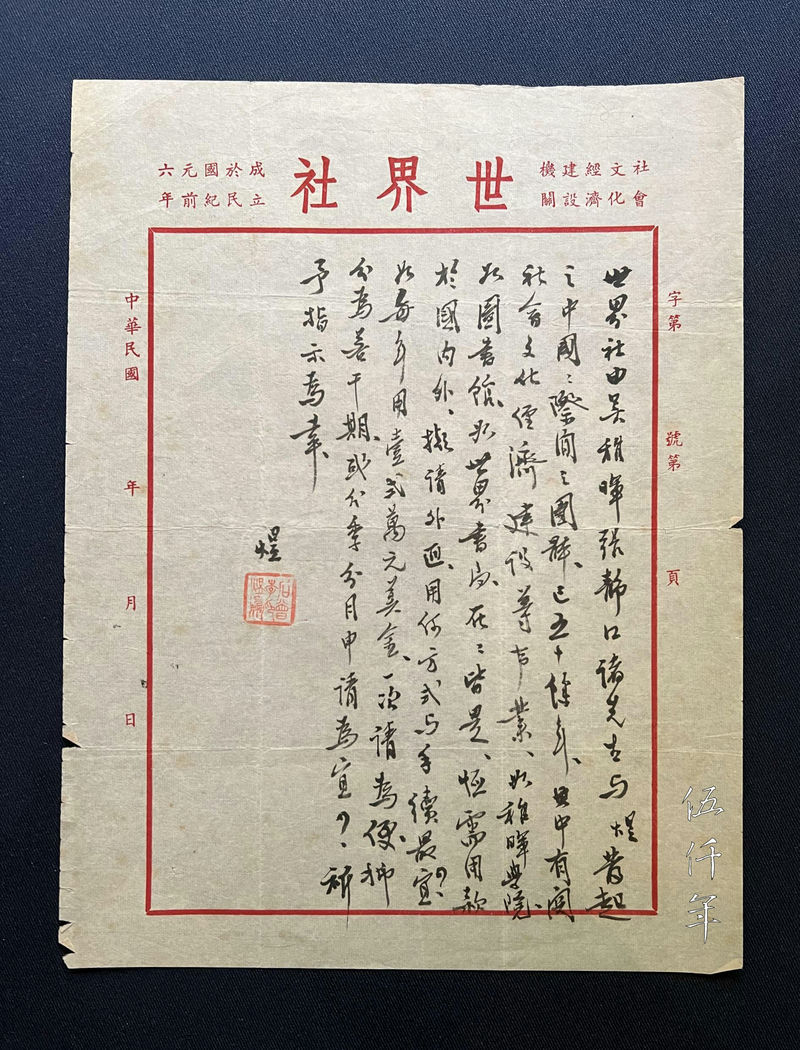
A letter by Li Yü-ying using the Shih-chieh Society letterhead
In the 27th year of the Kuang-hsü reign (1901), he traveled to Japan to study. He entered Tokyo Higher Normal School (東京高等師範學校) and in the same year, he participated in the founding of Kwangtung University. The following year, he clashed with the Ch’ing embassy and was sent back to Shanghai by the Japanese police. In the same year he established the Patriotic Study Society. Ts’ai Yüan-p’ei (蔡元培 1868-1940) served as the chief executive, and he was the academic supervisor. In September of the 29th year of the Kuang-hsü reign (1903), he fled the Ch’ing authorities for London. In the 31st year of the Kuang-hsü reign (1905), he became friends with Dr. Sun Yat-sen (孫中山先生 1866-1925) and Chang Ching-chiang (張靜江 1877-1950), and joined the revolutionary organization T’ung-meng Society. Next year, along with Chang Ching-chiang and Li Yü-ying (李煜瀛 1881-1973), he founded Shih-chieh Society (世界社). A year later, he launched La Novaj Tempoj weekly (「新世紀」 週刊) and Shih-chieh pictorial magazine (「世界」 畫報) to advocate for revolution. The Shih-chieh Society continued to operate after the central government relocated to Taiwan. In my collection there is a letter by Li Yü-ying using the Shih-chieh Society letterhead. The letter reads:
“Shih-chieh Society was established by Mr. Wu Ching-heng, Mr. Chang Ching-chiang and myself. It is a Chinese international organization that has been in existence for over fifty years. It’s various endeavors concerning society, culture, economy, and development, such as the Chih-hui College (稚暉學院), library, and The World Book Co., Ltd. are all around. ...”

Group portrait of students who participated in Mouvement Travail-Etudes
In October of the 3rd year of the Hsüan-t’ung reign (1911), the Wuchang Uprising took place. The Founding Father of the Republic, Dr. Sun Yat-sen, travelled from the United States to England and invited Wu Ching-heng to return to Shanghai. On 1 January in the 1st year of the Republic of China (1912), Dr. Sun Yat-sen became the Provisional President. In May, Ts’ai Yüan-pei became the Minister of Education and invited Wu Ching-heng to work on the Mandarin Chinese phonetic symbols. The following year, he was appointed chairman of the Pronunciation Unification Committee under the Ministry of Education and established the Mandarin Chinese phonetic symbols. In the same year, after the failure of the Second Revolution in 1913, he went to the United States. He returned to China in the 5th year of the Republic (1916) and became a Chinese studies teacher. In the 7th year of the Republic (1918), the Ministry of Education officially published the Mandarin Chinese phonetic symbols. The following year, together with Li Yü-ying, he started the Mouvement Travail-Etudes (留法勤工儉學會). In the 10th year of the Republic (1921), he founded L’Universite Franco-Chinois in Lyon, France (法國里昂中法大學), serving as the Chinese principal. In August, he personally led a group of one hundred and five students to study in France by ship.
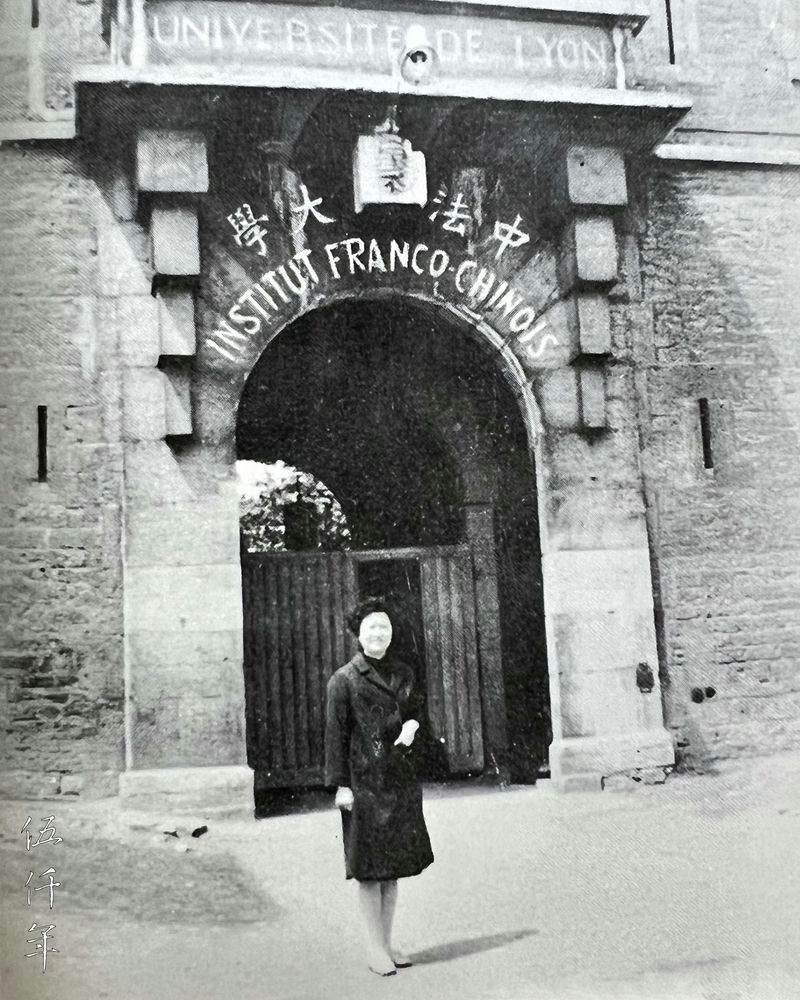
Front entrance of L’Universite Franco-Chinois in Lyon, France
In the 13th year of the Republic (1924), Wu Ching-heng attended the first National Congress of the Chinese Nationalist Party (China’s Kuomintang). Dr. Sun Yat-sen appointed him a member of the Central Supervisory Committee. When Dr. Sun passed away the following year, Wu Ching-heng was one of the nine witnesses to his will. In the same year, he established the Peking Overseas Preparatory School (北京海外預備學校) where he personally taught Chinese and English. Mr. Chiang Ching-kuo (蔣經國先生 1910-1988) was one of his students. He also served as a director of the Palace Museum. In November, at a meeting of the full Central Committee convened at Pi-yün Temple on Western Hills of Peking, he was elected chairman and resolutions were passed declaring the Communist Party an illegal organization, revoking the membership of Communist Party members within the Chinese Nationalist Party, and dismissing Soviet advisors like Borodin. This marked the beginning of the campaign against communism and the purge of communist elements within the Chinese Nationalist Party.
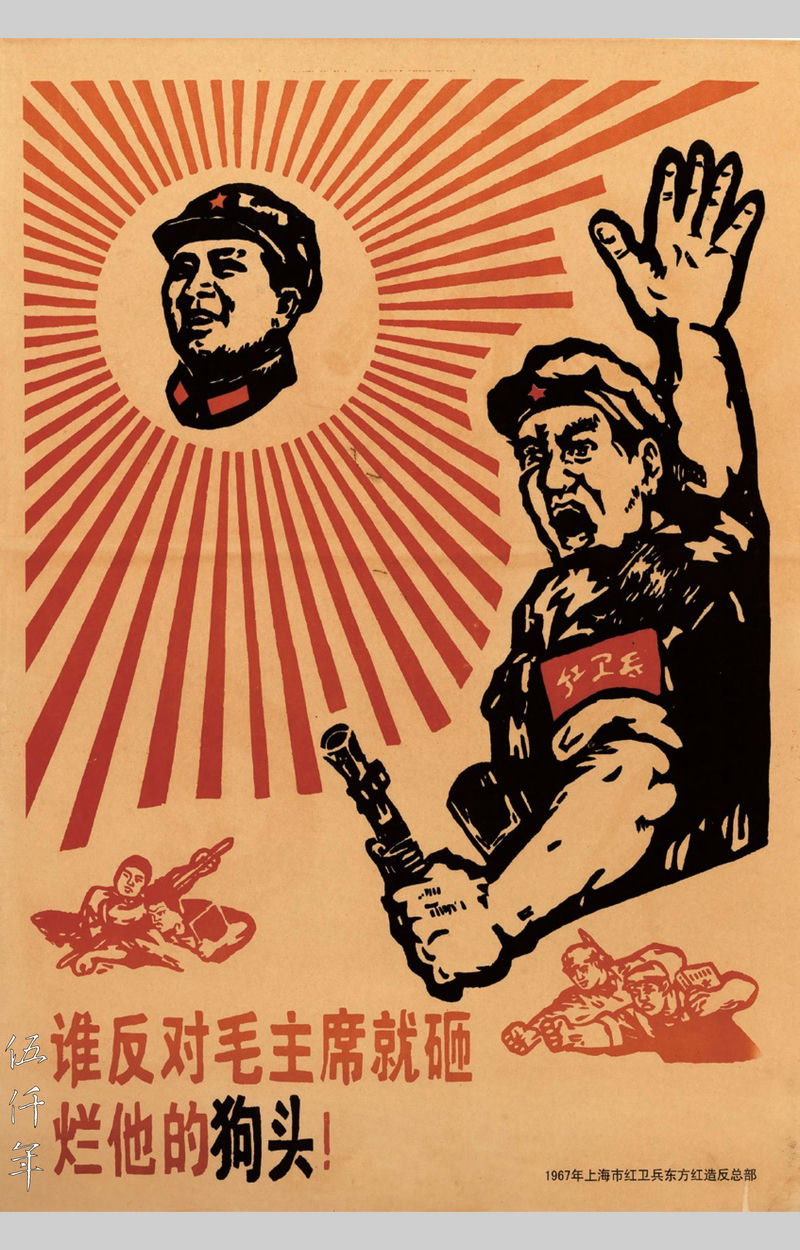
Cultural Revolution communist poster made by the Shanghai Red Guards, dated 1967 and titled: Whoever Opposes Chairman Mao will have the Dog’s Head Smashed!
In the 16th year of the Republic (1927), Wu Ching-heng wrote the article A Conclusion of the Weak in which he demonstrated unique insight and true perception. It reads:
“If China is in the hands of the Chinese Nationalist Party, there will be a little less sha-jen fang-huo (killings and burnings 殺人放火). But if, unfortunately, China falls into the hands of the Communist Party, they will sha-jen fang-huo (killings and burnings) without any qualms. That is the difference. I am against sha-jen fang-huo (killings and burnings), so I oppose the Communist Party unequivocally to the end ... Here is my definition of the communists:
‘In conversation, they are amiable, but on critical matters, they are resolute without compromise. In their actions, they are wicked and ruthless. Telling lies is their bible’”.
In the 15th year of the Republic (1926), he was appointed a member of the second session of the Central Supervisory Committee of the Chinese Nationalist Party. In the same year, Generalissimo Chiang Kai-shek became the commander-in-chief of the National Revolutionary Army and embarked on the Northern Expedition. At the oath-swearing ceremony to launch the military expedition on 9 July, Wu Ching-heng, representing the central party headquarters, presented the portrait of Dr. Sun Yat-sen, the party flag, and the national flag to Generalissimo Chiang. In April the following year, the National Government was established, and Nanking was declared the capital. On 10 October in the 17th year of the Republic (1928), the inauguration of the National Government took place, with the chairman, committee members, and heads of the five government branches known as Yuan taking office. Wu Ching-heng, representing the Central Supervisory Committee, administered the oath, presented the seals, and delivered the address.
In the 18th year of the Republic (1929), Wu Ching-heng was appointed a member of the third session of the Central Supervisory Committee. The following year, he was appointed a member of the International Cultural Advancement Committee by the League of Nations. In the 20th year of the Republic (1931), he became a member of the Presidium of the National Assembly and a member of the fourth session of the Central Supervisory Committee. In the 24th year of the Republic (1935), he became a council member of the Academia Sinica and a member of the fifth session of the Central Supervisory Committee. In the 26th year of the Republic (1937), the Second Sino-Japanese War broke out, and he relocated from Shanghai to Nanking and then to Ch’ung-ch’ing. In the 28th year of the Republic (1939), he served as an executive member of the Supreme Council of National Defense under the Chinese Nationalist Party. The following year, he became chairman of the National Language Promotion Committee under the Ministry of Education. In the 30th year of the Republic (1941), he formulated the System of Chinese Romanization and created the Song of Phonetic Symbols. In the 33rd year of the Republic (1944), on his 80th birthday, he was awarded the first class Order of Propitious Clouds (卿雲勳章). In the following year, he was appointed a member of the sixth session of the Central Supervisory Committee.
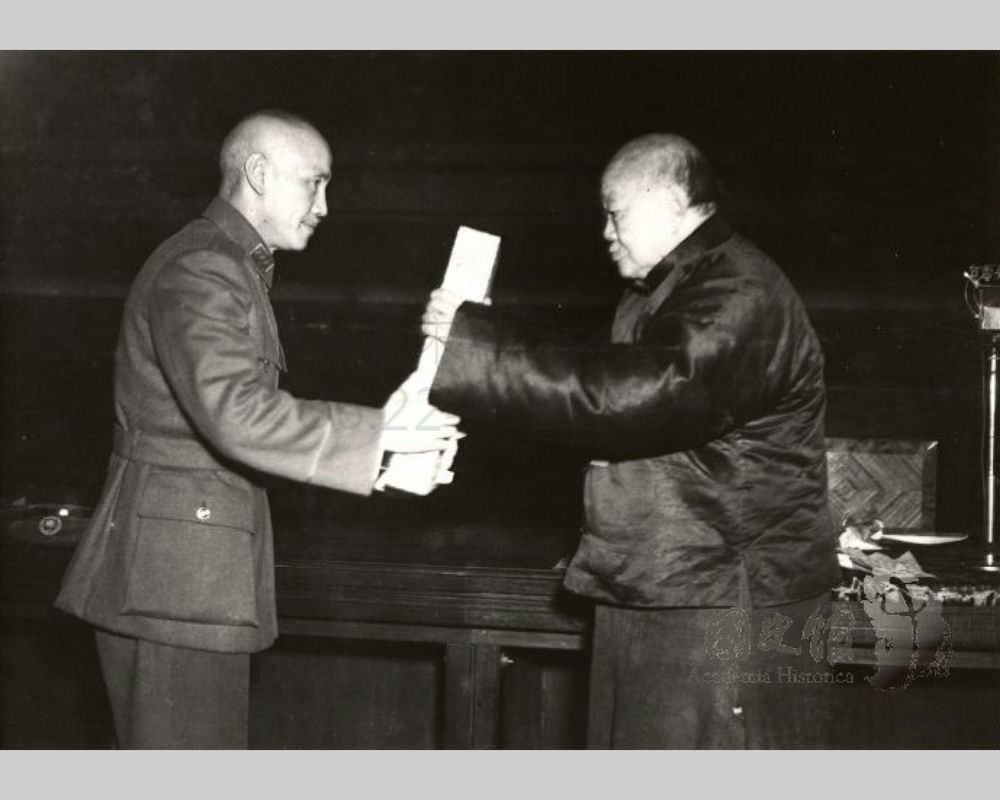
On 25 December 1946, Wu Ching-heng presided over the closing ceremony of the National Constituent Assembly and presented the final version of the Constitution of the Republic of China to Chairman Chiang Kai-shek
In the 35th year of the Republic (1946), Wu Ching-heng served as a representative of the National Constituent Assembly. On 25 December, the Constitution of the Republic of China was approved. He presided over the closing ceremony and presented the final version of the Constitution of the Republic of China to Chairman Chiang Kai-shek of the National Government.
In the 37th year of the Republic (1948), Chairman Chiang Kai-shek was elected the first President of the Republic of China. Wu Ching-heng supervised the inauguration and delivered the congratulatory speech. In February the following year, as the political and military situation in mainland China became precarious, he moved to Taiwan. In the 39th year of the Republic (1950), the Chinese Nationalist Party established the Central Reform Committee in Taiwan, and he was appointed a member of the Central Supervisory Committee. Wu Ching-heng excelled in calligraphy and was a prolific writer. The Collected Works of Mr. Wu Chih-hui in 18 Volumes (吳稚暉先生全集十八卷) was published by the Chinese Nationalist Party Historical Materials Compilation Committee in the 58th year of the Republic (1969).
Wu Ching-heng possessed perceptive insights into traditional culture and offered clear explanations in a straightforward manner. Below are excerpts from two of his speeches to provide a taste of his approach. The first excerpt discusses ethics and propriety, and the second discusses the concept of an ideal Confucian society.

Calligraphy of the characters Propriety, Righteousness, Integrity and Shamefulness written by President Chiang Kai-shek
The first excerpt comes from the Speech on the Seventh Anniversary of the New Life Movement delivered on 29 February in the 30th year of the Republic (1941). It says:
“The virtues of propriety, righteousness, integrity, and shamefulness are clearly the ancient way of life of our forefathers. Why then do we call it ‘New Life’? Chairman Chiang Kai-shek has explained time and again that it is because this supremely precious old way of life has been lost for quite some time, and now we are restoring it ...
The most appropriate explanation of the essence of the New Life Movement is having a decorous and proper overall attitude, acting genuinely and truthfully stemming from an inner awakening, being upright and just, stainless and honest with a moral conscience. Summarized, it encompasses the three virtues of wisdom, benevolence, and courage, and broadened, it encompasses the eight virtues (loyalty, filial piety, benevolence, compassion, truthfulness, justice, harmony and peace) propagated by Dr. Sun Yat-sen. Then, propriety, righteousness, integrity, and shamefulness are expanded into the following: decorous and proper, upright and just, stainless and honest, genuine and truthful, followed by the qualities of tidiness, cleanliness, simplicity, plainness, swiftness, and accuracy. Thus it is understandable and clear. Today, commoners and villagers examining themselves regarding their own level, need not be wiser than the sages, virtuous men, philosophers, or gentlemen of the past, but they should certainly surpass the commoners and villagers of the past. This is because the people of all countries today are able to achieve a level comparable to the gentlemen of our past. If even these four virtues cannot be widely adopted, then we are thick-skinned when facing the peoples of other countries and should warn ourselves of the ancient saying ‘the shame of having no shame.’”
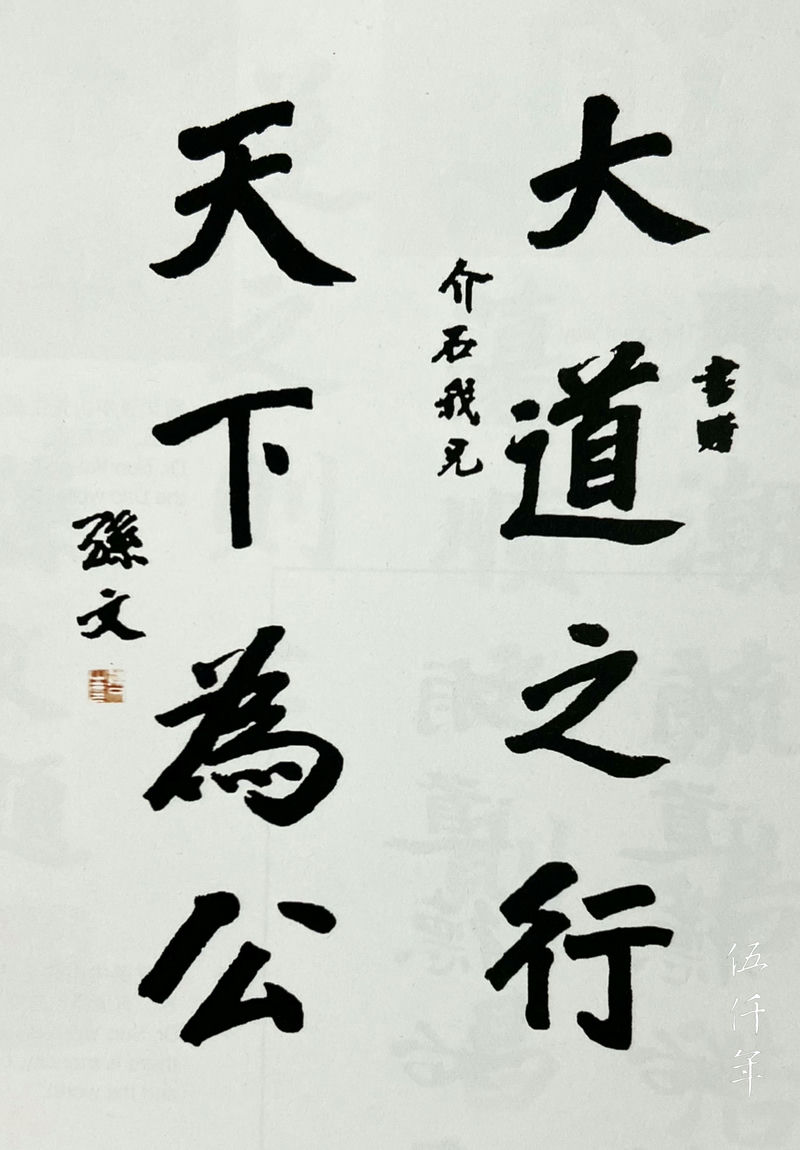
A pair of calligraphy couplets written by Dr. Sun Yat-sen to President Chiang Kai-Shen with the words: The way to proceed to the World of Universal Harmony is to share the world with everyone
The second excerpt comes from the speech The Confucian Doctrine of the Ideal Society delivered at the Confucian Society on 13 April in the 32nd year of the Republic (1943):
“The Confucian doctrine to describe an ideal world is Ta-t’ung (大同), the World of Universal Harmony. It is often seen as extremely lofty and hard to attain. While it is indeed lofty and hard to attain, yet our Founding Father Dr. Sun Yat-sen frequently mentioned the two words Ta-t’ung (大同), the World of Universal Harmony. His final teachings are now in the party and national anthems that everyone is long accustomed to singing. He told us that as long as we adhere to the Three Principles of the People, we will be able to ‘establish the Republic of China,’ and from there, we can progress to an ideal world of Ta-t’ung (大同), the World of Universal Harmony. He spoke of the World of Universal Harmony as being very approachable and easy…….
And what is the method? From the beginning Confucius used very simple language and that is: ‘The way to proceed to the World of Universal Harmony is to share the world with everyone’ (大道之行也,天下為公). Dr. Sun Yat-sen also wrote these four words ‘To share the world with everyone’ (天下為公) countless times. These four words on horizontal plaques written by him are displayed and seen everywhere .….
‘To share the world with everyone’ is interpreted by some people as ‘Within the Four Seas, all are brothers’. Broadly speaking, it implies when there is no distinction of ownership amongst all the nations of the world, the World of Universal Harmony can be reached. This interpretation is certainly correct, but this is a comment on the result after success. If we ask about the method, it should be explained in a narrower way. ‘To share the world with everyone’ means that all the people in the world must have the ability ‘To share the world with everyone’. There should be no one who acts for selfish benefit. Firstly, we should hope that everyone has the ability ‘To share the world with everyone’ and no one acts for selfish benefit. Secondly, we should still hope that everyone has the ability ‘To share the world with everyone’ and no one acts for selfish benefit. Thirdly, we should continue to hope that everyone has the ability ‘To share the world with everyone’ and no one acts for selfish benefit. Thus, all our hopes are the same, that everyone has the ability ‘To share the world with everyone’ and no one acts for selfish benefit. This is the meaning ‘To share the world with everyone’.
However, the world’s population is now two billion. Just China alone, throughout history, her population is a hundred million. To hope that everyone in the world has the ability ‘To share the world with everyone’, is easier said than done. All thinkers and moralists, regardless of their methods, when they talk about universal love, to serve others, escape to seclusion, innate evil, innate good, have been criticized for being passive or scolded for extremism. If we explore their consciences, they all hope that everyone in the world has the ability ‘To share the world with everyone’. This is certainly unanimous ..
When government, law, morality, and propriety are all lost, everyone in the world will act for selfish benefit, this state is called luan-shih (chaotic world 亂世). If government and law are rectified, but morality and propriety are lacking, even though there are fewer who act for selfish benefits, yet there are not many who are willing ‘To share the world with everyone’, this state is called p’ing-shih (average world 平世). When government, law, morality and propriety are enlightened and orderly, those who act for selfish benefits reduce by the day, while those who are willing ‘To share the world with everyone’ increase by the day, this state is called hsiao-k’ang (moderate well-being 小康). When the implications and interferences of government and law reduce by the day, the outcomes of morality and propriety become very substantial, no one acts for selfish benefit, everyone is willing ‘To share the world with everyone’, this state is called Ta-t’ung (World of Universal Harmony 大同). From a chaotic world to the World of Universal Harmony, is a journey from the darkest to the brightest point alongside a straight line. Universal Harmony, Universal Harmony, it is far from being lofty and unattainable. It is straightforward and close to the heart. All it takes is ‘To share the world with everyone’”.
Eighty years on, reading the posthumous words of Wu Ching-heng, one promptly realizes that the World of Universal Harmony can still be attained.

Seal impression and ink rubbing of the “Seal of Wu Chih-hui Ching-heng”
There is an ivory seal carved with the names of Wu Ching-heng in my collection. It is likely to be his only extant seal.
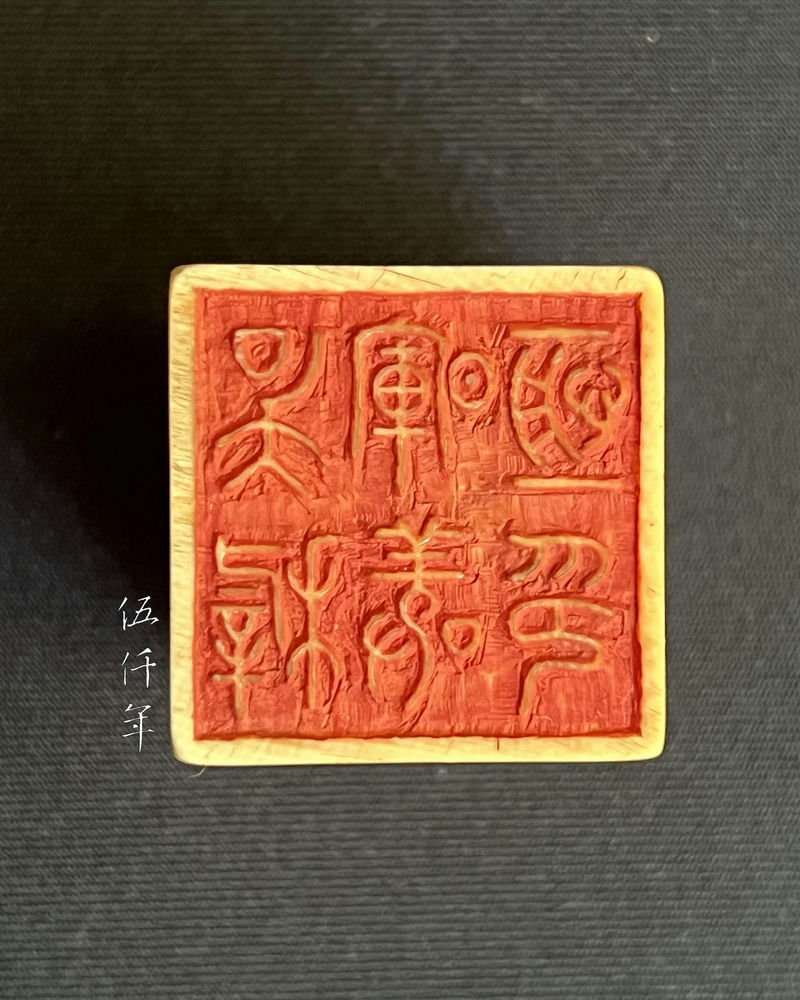
Carved underside of the “Seal of Wu Chih-hui Ching-heng”
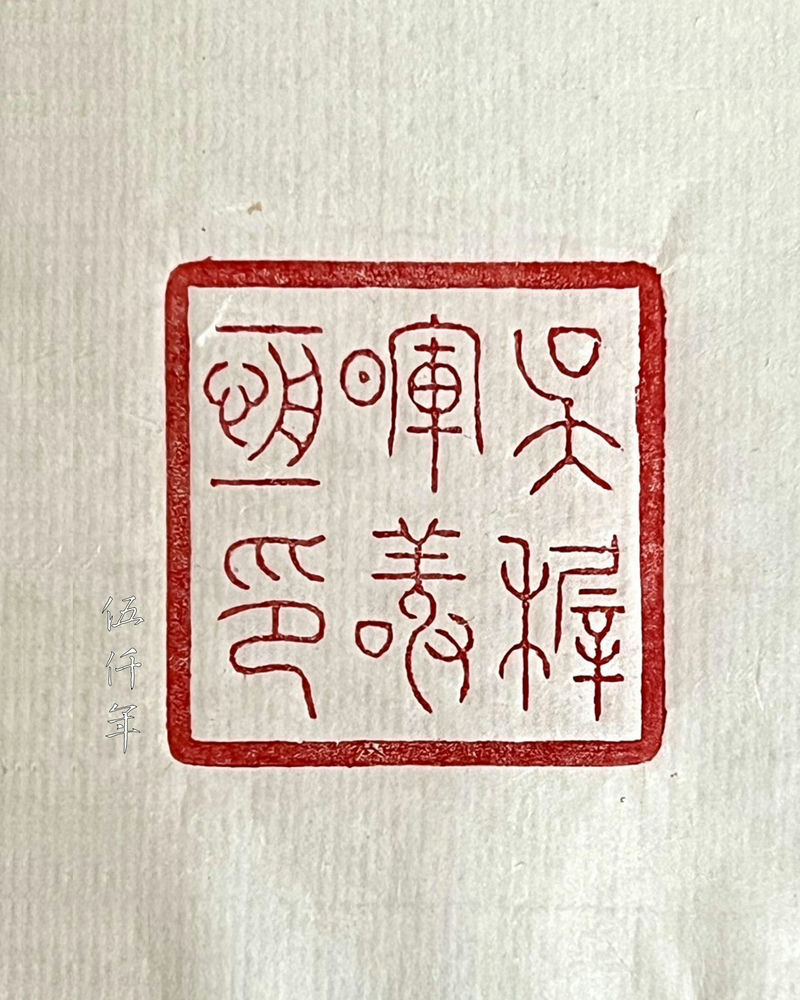
Seal impression of the “Seal of Wu Chih-hui Ching- Heng”
The seal reads:
“Seal of Wu Chih-hui Ching-heng” (吳稚暉敬恒印)
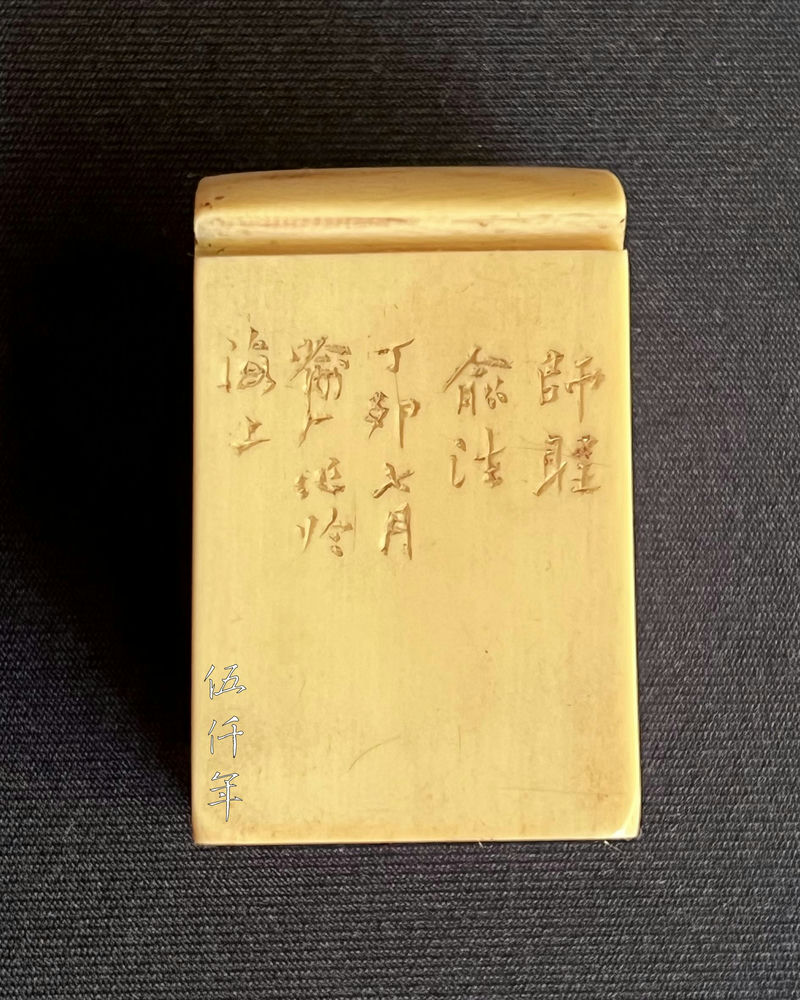
Side inscription of the “Seal of Wu Chih-hui Ching-heng”
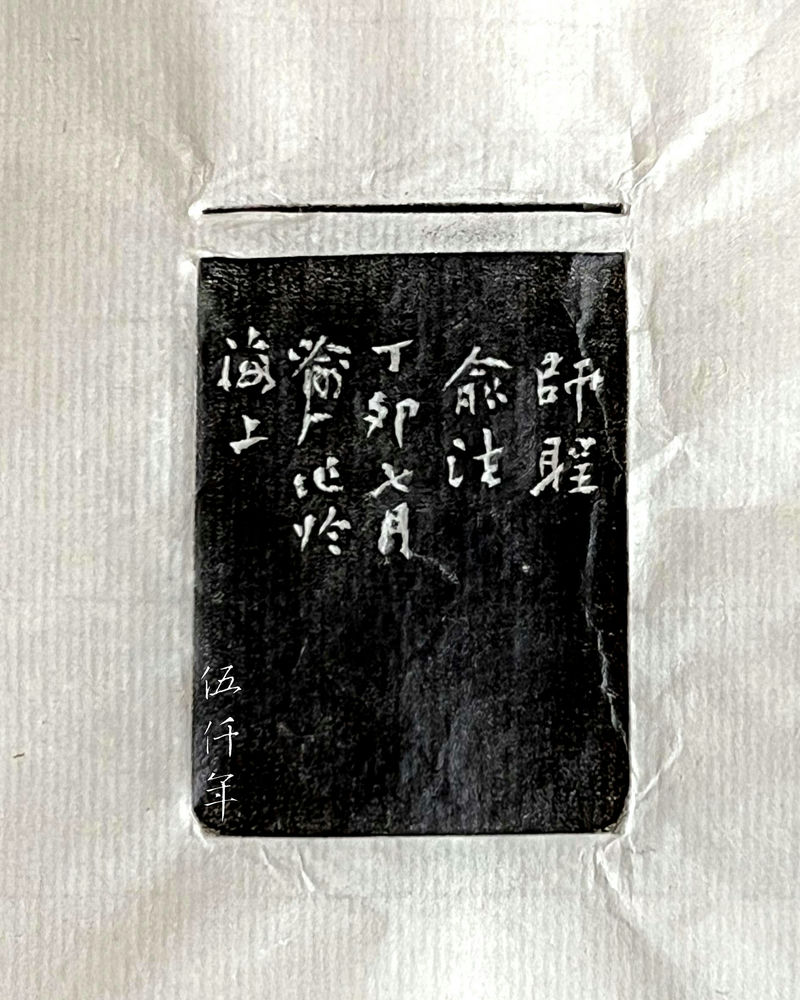
Ink rubbing of side inscription of the “Seal of Wu Chih-hui Ching-heng”
The side inscription reads:
Emulating the style of Sheng-yü (聖俞)
in the 7th month of ting-mao year,
by Yü-an (喻厂) in Shanghai.”
The seal was carved in the 7th month of ting-mao year, which corresponds to the 16th year of the Republic, 1927. On 22 March that year, the National Revolutionary Army captured Shanghai, followed by the capture of Nanking on 24 March. On 18 April, the government declared Nanking as the capital. During this time, the Northern Expedition and the campaign to purge the communist elements within the party took place concurrently, and Wu Ching-heng traveled frequently between Shanghai and Nanking.

Title page of Shih-yüan Seal Impressions by Wu Tzu
The first line of the side inscription, “Emulating the style of Sheng-yü (聖俞)” refers to Wu Tzu (吳咨 1813–1858), tzu Sheng-yü (聖俞), hao Shen-yü (哂予). He was a native of Wu-chin (武進), Kiangsu Province. He was a student of Li Chao-lo (李兆洛 1769-1841) and was appointed a posting as the Salt Commissioner of Shantung. Wu Tzu was an expert in lexicology, he excelled in calligraphy and seal engraving. His flora and fauna works followed the style of Yün Shou-p’ing (惲壽平 1633-1690). He was particularly renowned for seal engraving. His compiled seal works was Shih-yüan Seal Impressions (適園印印). According to the inscription by Yü-an (喻厂), the seal emulates the style of Wu Sheng-yü (吳聖俞).
The carver of this seal is Yü-an. The name Yü-an may no longer be familiar to people nowadays, however his name was prominent in the early years of the Republic.
Shih Yü-an (史喻厂), also known as Yü-an (喻盦), his dates of birth and death are unknown. His original name is Ch’ien (謙), tzu Yü-an (予安), hao Ts’uan-weng (爨翁), Ts’uan-fu (爨父), Ts’uan-lin Shan-min (爨林山民). His studio named was Sung-pin Yün-liu Ts’ao-t’ang (淞濱雲留草堂). He was a native of Li-yang (溧陽), Kiangsu Province. He had joined the Hsin-hai Revolution in Wuchang in 1911 and held the position of County Magistrate in Chiang-men (江門). The location of his posting has to be further verified. He was a member of the Chinese Nationalist Party. Skilled in calligraphy, he loved the Ts’uan-pao-tzu Stele (爨寶子碑) and hence used the first character in his names. He excelled in seal carving, his style hark back to the styles of Chin and Han dynasties, matching the ancients in skill. Dr. Sun Yat-sen, the Founding Father of the Republic, greatly admired his skills and engaged him to engrave a number of seals. In the 1st year of the Republic (1912), he carved the “Seal of the Provisional President of the Republic of China” (中華民國臨時大總統印), and in July of the 11th year of the Republic (1922), he carved the “Seal of Sun Wen” (孫文之印 Sun Wen was the original name of Dr. Sun Yat-sen). His reputation soared. He also carved more than a hundred seals for Yang Ts’ang-pai (楊滄白), also known as Yang Shu-k’an (楊庶堪), producing a two-volume set of seal impressions, titled T’ien-yin-ko Seal Compilation (天隱閣印譜).
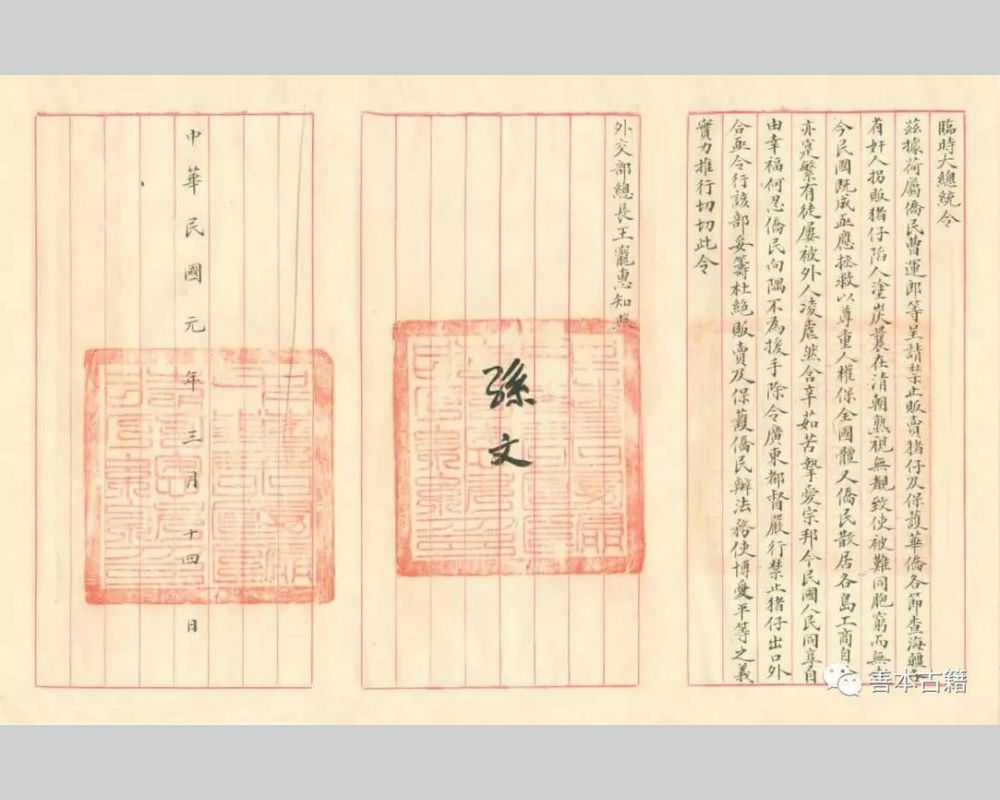
Order of the Provisional President of the Republic of China dated 14 March in the 1st year of the Republic (1912), impressed with the “Seal of the Provisional President of the Republic of China” carved by Shih Yü-an

Seal impression of the “Seal of the Provisional President of the Republic of China” carved by Shih Yü-an
On 15 May in the 13th year of the Republic (1924), the Shanghai newspaper Shun Pao (申報) published a tz’u poem titled A Lyric to the tune Huan hsi sha After Perusing the Seal Compilation of Mr. Shih Yü-an, composed by Yüan Po-k’uei (袁伯夔 1879-1939). It reads:
Behold tiny characters of antique charm,
Red strokes on paper stir the poet on settee.
Savant of ancient scripts from Ch’in and Chin,
Carvings of half-blooms, white breeze and phoenix signs.
A venerable man fine as jade and worthy of the Moon Palace,
His good name befits the status of Yang and Wang.
Note: Yang is likely to be Yang T’ien-chi (楊天驥 1882-1958), Wang is likely to be Wang T’i (王禔 1880-1960), both eminent seal engravers of that time.
Yüan Po-k’ue passed the provincial examination and attained the qualification of chü -jen (舉人) in the 29th year of the Kuang-hsü reign (1903). He was a book collector during the early Republican period. Literati at that time dearly cherished the work of Shih Yü-an.
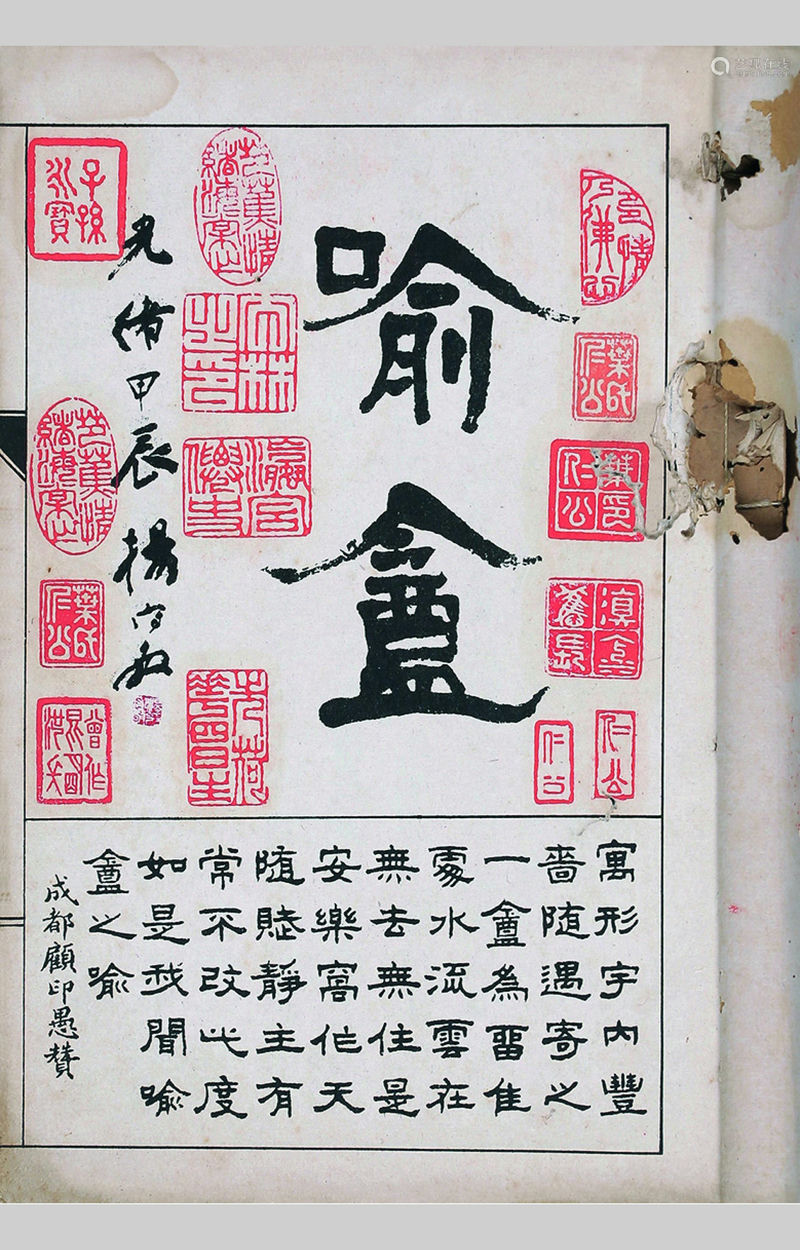
Inside page of a book with impressions of seals by Shih Yü-an
On 11 May in the 14th year of the Republic (1925), the Supplement of Eastern Times (小時報), a publication of Eastern Times (時報) in Shanghai, carried a column titled Art World News (藝術界消息). It reads:
“By numerous accounts, Ts’uan-lin Shan-min (爨林山民) Shih Yü-an (史喻厂), who is skilled in calligraphy and seal carving, recently compiled a book of seal impressions. It was reviewed and appraised by Cheng Su-k’an (鄭蘇堪) and Chuang Ssu-chien (莊思緘), and their calligraphy graced the cover slip and the title page. The content includes reduced scale copies of ink rubbings of sixteen types of ritual vessels and stone tablets, followed by hand carved portraits and seal impression of the President’s jade seal, many seals of famous individuals, and over two hundred bronze seals that correspond to the sixty years of the sexagenarian cycle. Additionally, meticulous ink rubbings were made of the side inscriptions. It certainly presents an unprecedented eye-opener in the realm of seal engraving. It is in the process of printing and is expected to be published this summer. Mr. Shih currently resides in seclusion at No. 113, Alley 4, Glock Road, Chu-chia Bridge, north of the French Concession. Those interested in commissioning calligraphy or seal carving can also make enquiries at all the major folding fan and paper distributors.”
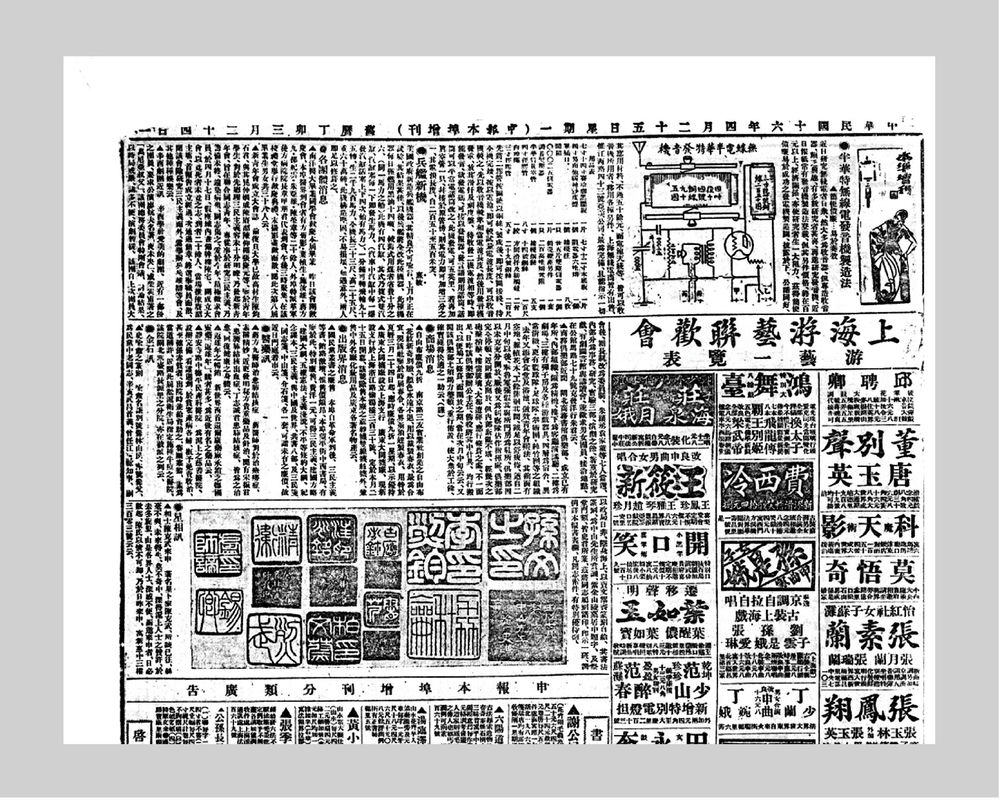
News of Epigraphy column in Shun Pao dated 25 April 1927, illustrating eleven seals carved by Shih Yü-an, including “Seal of Sun Wen”
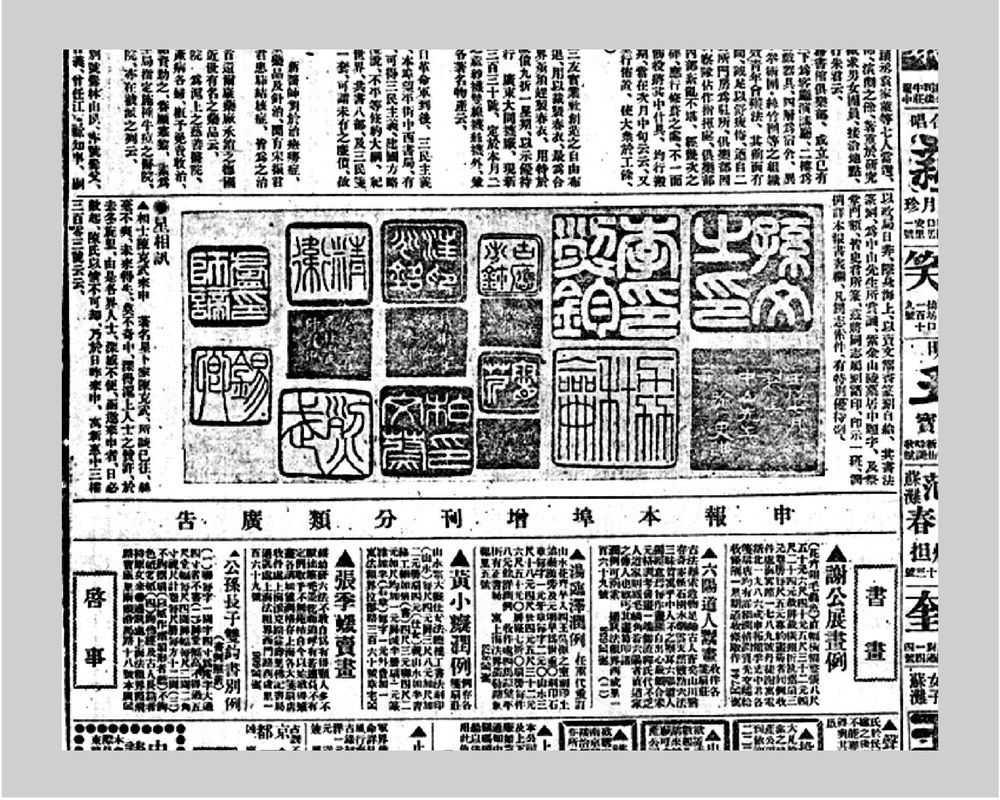
Illustrations of eleven seals carved by Shih Yü-an, including “Seal of Sun Wen”
Is the book of seal impressions by Yü-an still in existence today? It is difficult to know. On 25 April in the 16th year of the Republic (1927), the News of Epigraphy (金石訊) column in Shun Pao (申報) published eleven seal impressions carved by Yü-an. Amongst them is an impression of the “Seal of Sun Wen” (孫文之印) with ink rubbing of the side inscription. Although the ink rubbing of the side inscription is difficult to read, it should nevertheless be treasured. Close examination of the ink rubbing reveals the following characters: “Made in the seventh month of jen-hsü year (壬戌), presented to Mr. Chung-shan (中山 another name of Dr. Sun Yat-sen), by Yü-an Shih Ch’ien.”
The News of Epigraphy column says:
“The Seal Carving of Shih Yü-an. Yü-an’s name is Ch’ien (謙), hao Ts’uan-weng (爨翁) , Ts’uan-fu (爨父). .... His calligraphy and seal carving were appreciated by Mr. Chung-shan (Dr. Sun Yat-sen). Mr. Shih wrote the calligraphy in the middle of the sepulchre and on the plaques above the doors of the memorial hall at Purple Mountain . ...”

The plaque with the words: “The Vast Righteous Spirit Endures” above the door of the sepulchre at Sun Yat-sen Mausoleum in Nanking
“The calligraphy in the middle of the sepulchre” should refer to the plaque with the characters: “The Vast Righteous Spirit Endures (浩氣長存)”, installed above the door of the sepulchre at the Sun Yat-sen Mausoleum in Nanking. “On the plaques above the doors of the memorial hall” should refer to the plaque with the characters: “The Righteous Spirit of the Universe (天地正氣)” on the exterior wall of the memorial hall, as well as the three plaques of “Nationalism (民族)”, “Democracy (民權)”, and “Livelihood (民生)”. They are all calligraphic works by Shih Yü-an.

Memorial hall of Sun Yat-sen Mausoleum in Nanking

Plaques with the words: “The Righteous Spirit of the Universe” , “ Nationalism”, “Democracy” and “Livelihood” on the facade of the memorial hall

Plaque with the words:”The Righteous Spirit of the Universe” on the facade of the memorial hall
In my collection there is an album of family letters written by Wu Ching-heng. There are altogether nine letters and two pieces of commendations. It includes four letters to Chiang Tung-fu (蔣東孚), the husband of his cousin, one letter to A-ta (阿大), his cousin, four letters to Sai (賽), the nephew, a commendation for the portrait of his cousin, and a commendation for the portrait of the cousin’s husband.
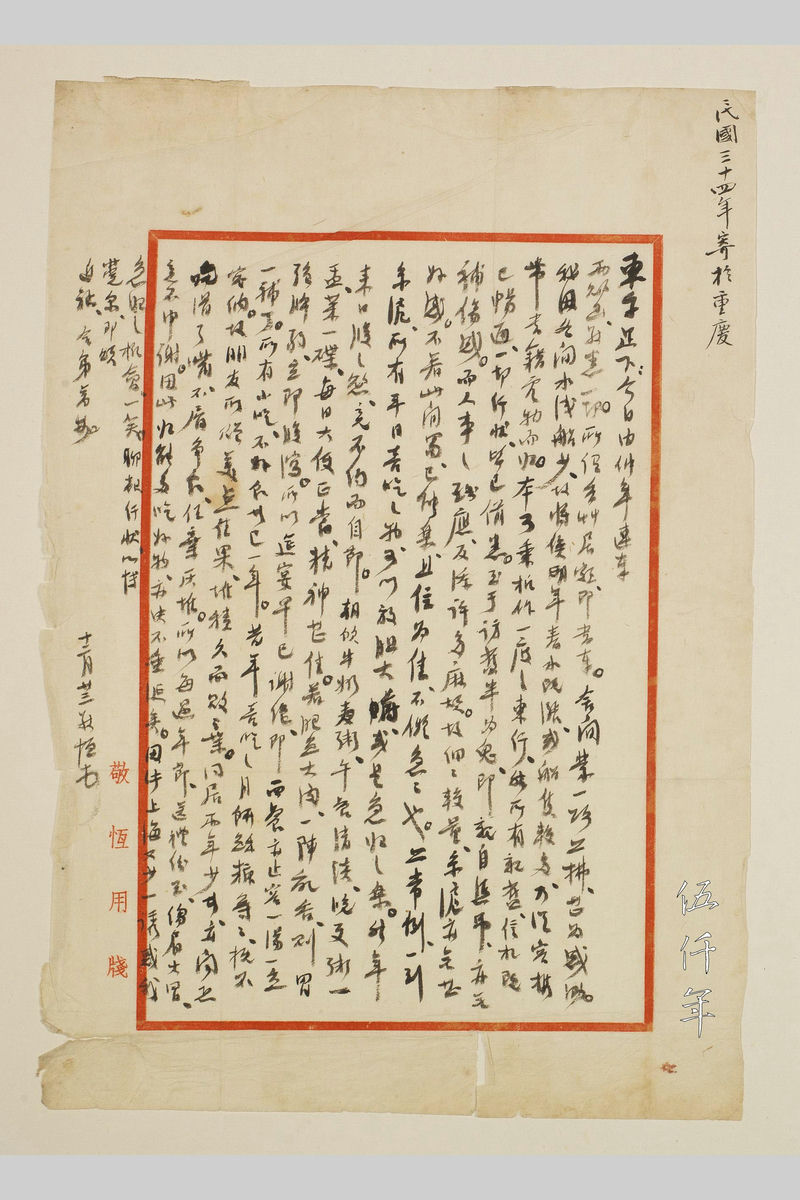
First letter to Chiang Tung-fu from Wu Ching-heng

Detail of first letter to Chiang Tung-fu from Wu Ching-heng
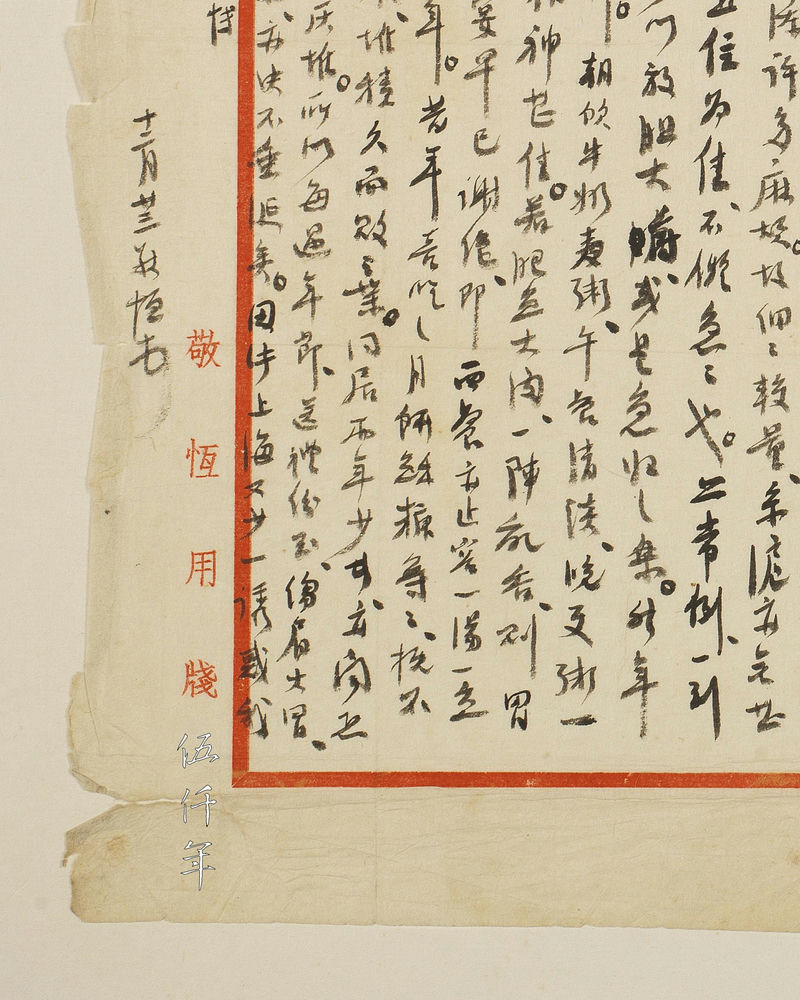
Detail of first letter to Chiang Tung-fu from Wu Ching-heng
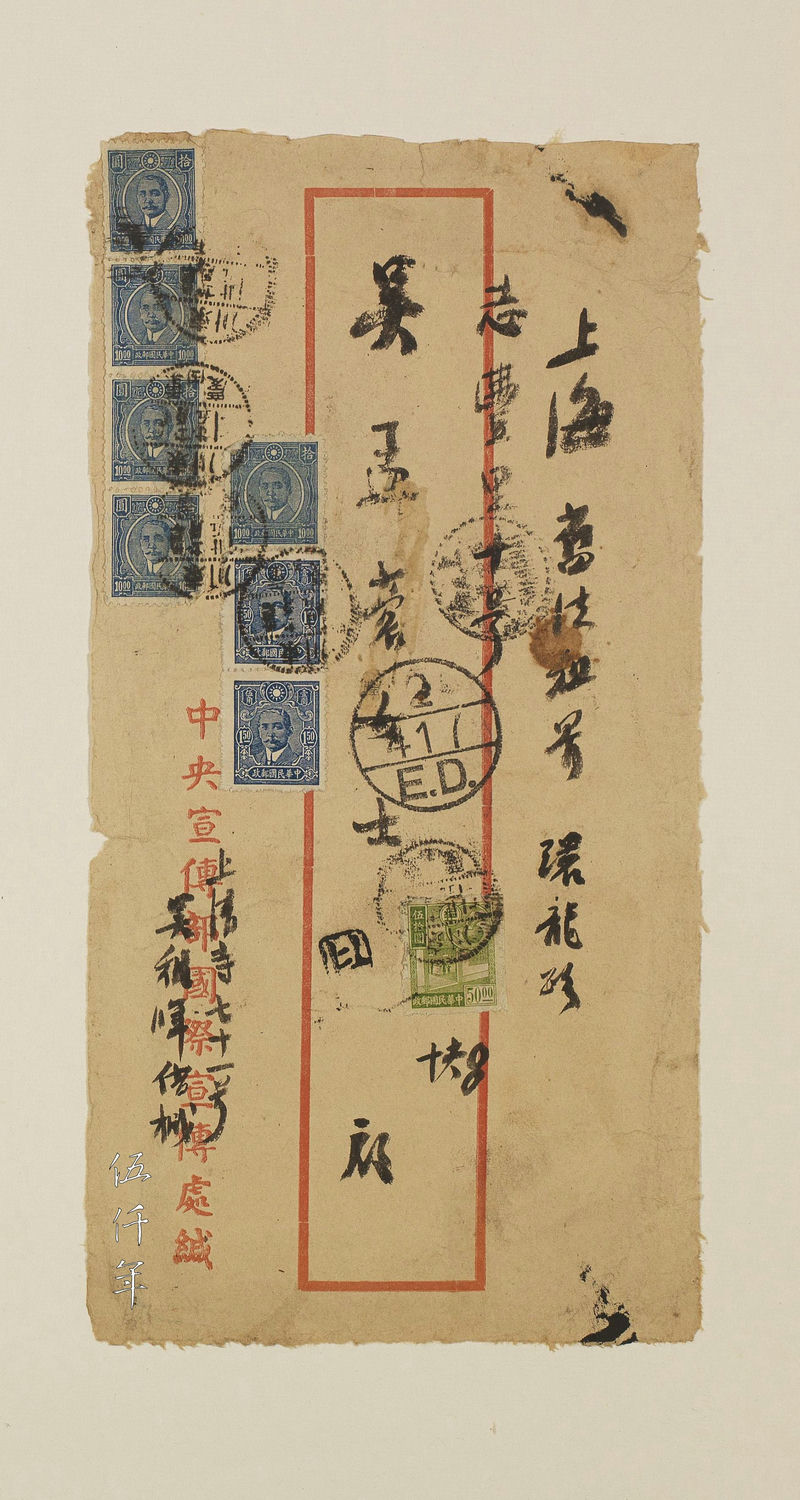
Envelope of first letter to Chiang Tung-fu from Wu Ching-heng
The first letter to Chiang Tung-fu was written on 23 December in the 34th year of the Republic (1945) and sent from Chungking, the wartime capital. It was written a few months after Japan’s surrender in September. The letter also comes with an envelope.
The letter reads:
“Dear Tung-fu,
Today I received two successive letters of encouragement through Chung-nien (仲年), and I have respectfully read them. The so-called ‘Fragrant Grass Abode (香草居)’ calligraphy plaque will soon be written and sent. My humble dwelling has been taken care by you all this time, I am most grateful. Due to the shallowness of water and lack of boats during the winter months, I plan to wait until the water level rises in the coming spring or when there are more boats available. By then I will return with ease, bringing books and other belongings. Although there was a chance to make a trip to the east, postal service has resumed with relatives and friends, and I have already learned about their circumstances. As for visiting old friends, half of them have passed away, and even paying respect personally at their graves will not alleviate the sorrow. Regarding socializing, it just adds a lot of trouble. After careful consideration, there is not much appeal in Peking or Shanghai. I can be happy here in Szechwan, living here is good, there is no need to rush elsewhere. As is customary, upon arriving in Peking or Shanghai, I can indulge in all the favourite foods without restraint, which perhaps is a source of pleasure for a quick return. However, over the years my taste for fine foods happens to have reduced through self-discipline. In the morning I drink milk and consume barley porridge, lunch is light, and dinner consists of a bowl of congee and a plate of vegetables. My daily bowel movement is regular, and I am in good spirits. If I eat a lot of fatty fish and meat without restraint, it quickly leads to digestive issues causing diarrhea. So I have long declined invitations to banquets. Even for a western-style meal, I limit it to soup, fish and pudding. Snacks and treats I no longer enjoy for the past year. I used to like things such as mooncakes and brittle candies which I don’t tolerate anymore. Gifts of confection and fruits from friends are piled untouched until they must be discarded. I heard that even the two youngsters living with me have eaten too much, they have lost their appetites and cannot be bothered to fight over food, which is just left to pile up and throw away. Gifts arrive in abundance every New Year, causing frowns and vexations, they are mostly unacknowledged. Hence, it is fine to eat a lot on my return, but there is no yearning anymore. As a result, Shanghai has one less opportunity to tempt my hasty return. For a laugh. Just sharing my current situation to provide a light-hearted update. Wishing you good health. Your younger brother with best wishes.
Yours respectfully,
Ching-heng, 23 December.”
After the victory of the War of Resistance Against Japanese Aggression, everything needed rejuvenation. The people who were scattered far and wide were eager to return home. The handwritten plaque “Fragrant Grass Abode (香草居)” by Wu Ching-heng dedicated to Chiang Tung-fu, was probably intended as a decoration after the renovation of Chiang’s former residence in Wu-hsi (無錫). The address on the lower left side of the envelope shows “No. 71 Shang-ch’ing-ssu (上清寺七十一號)”. Wu Ching-heng moved to Chungking at the end of November in the 26th year of the Republic (1937). He lived at No. 17 Tseng-chia-yen (曾家岩). On 12 June in the 29th year of the Republic (1940), Chungking came under heavy Japanese air bombardment, resulting in the complete destruction of his residence. He then moved to No. 71 Shang-ch’ing-ssu, below the Kiangsu Education Fund Management Office. This space, measuring only twelve square feet, was named Tou-shih (miniature room 斗室).
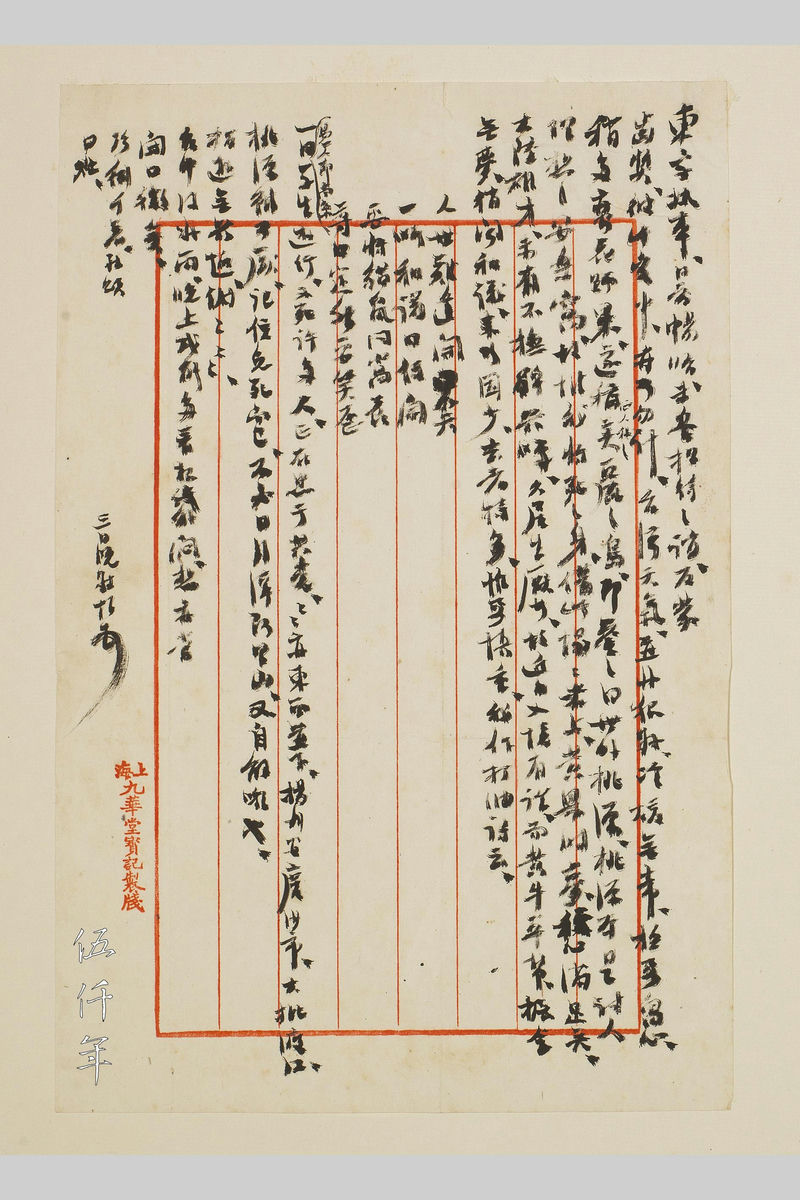
Second letter to Chiang Tung-fu from Wu Ching-heng
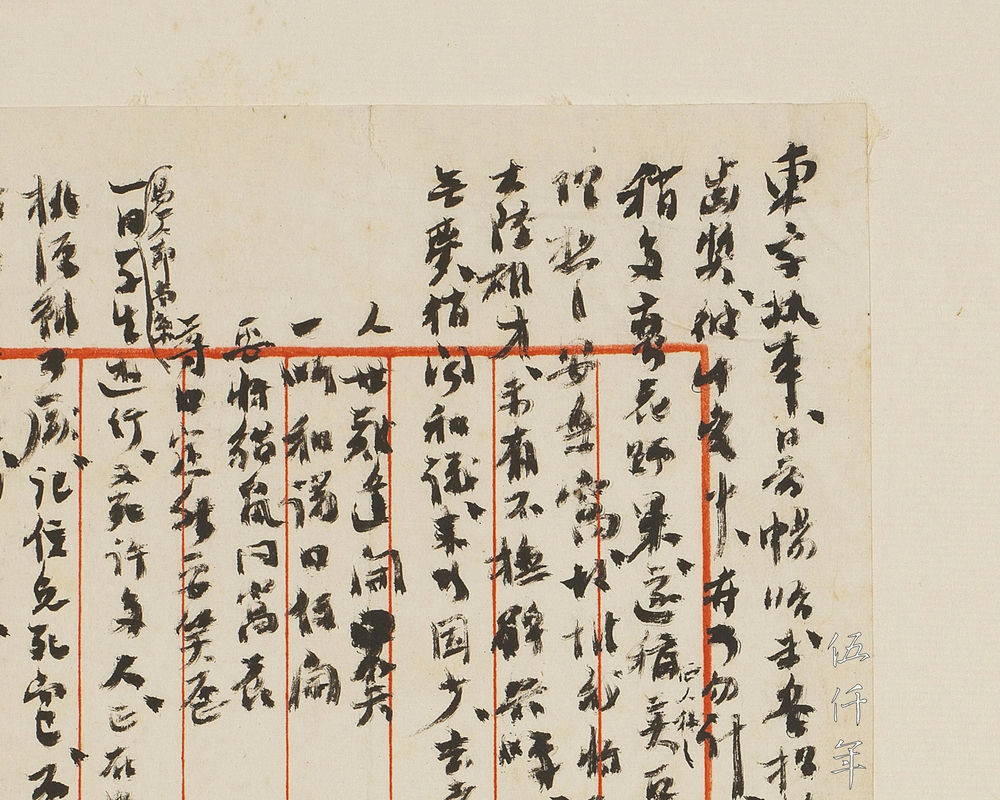
Detail of second letter to Chiang Tung-fu from Wu Ching-heng
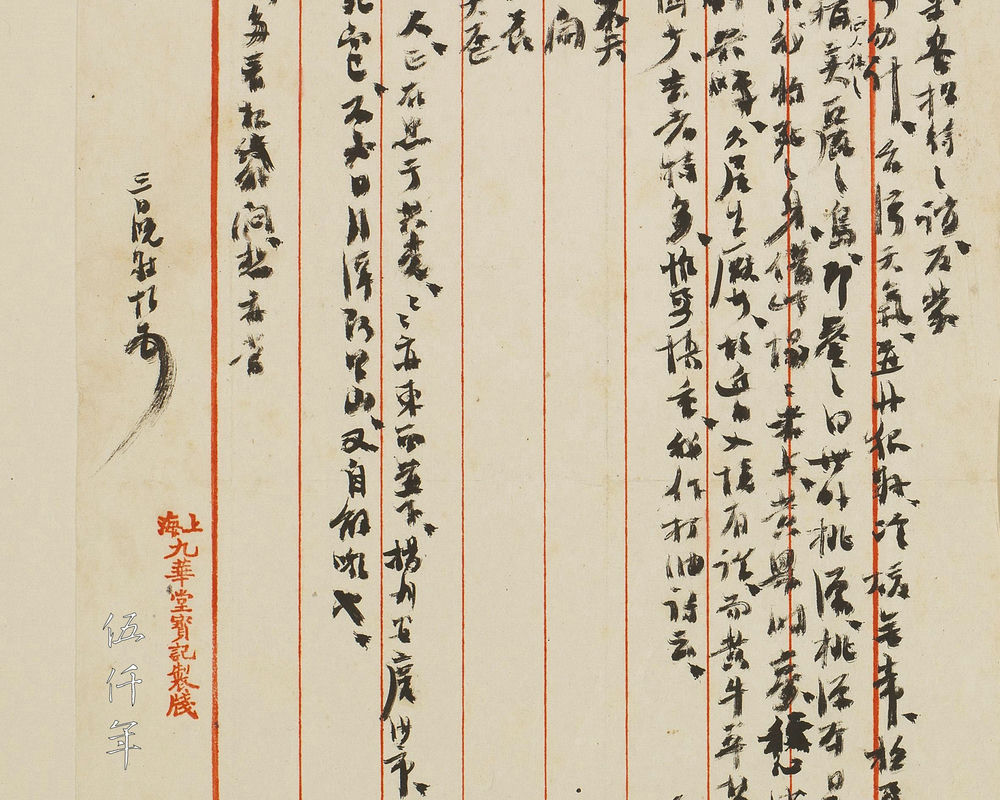
Detail of second letter to Chiang Tung-fu from Wu Ching-heng
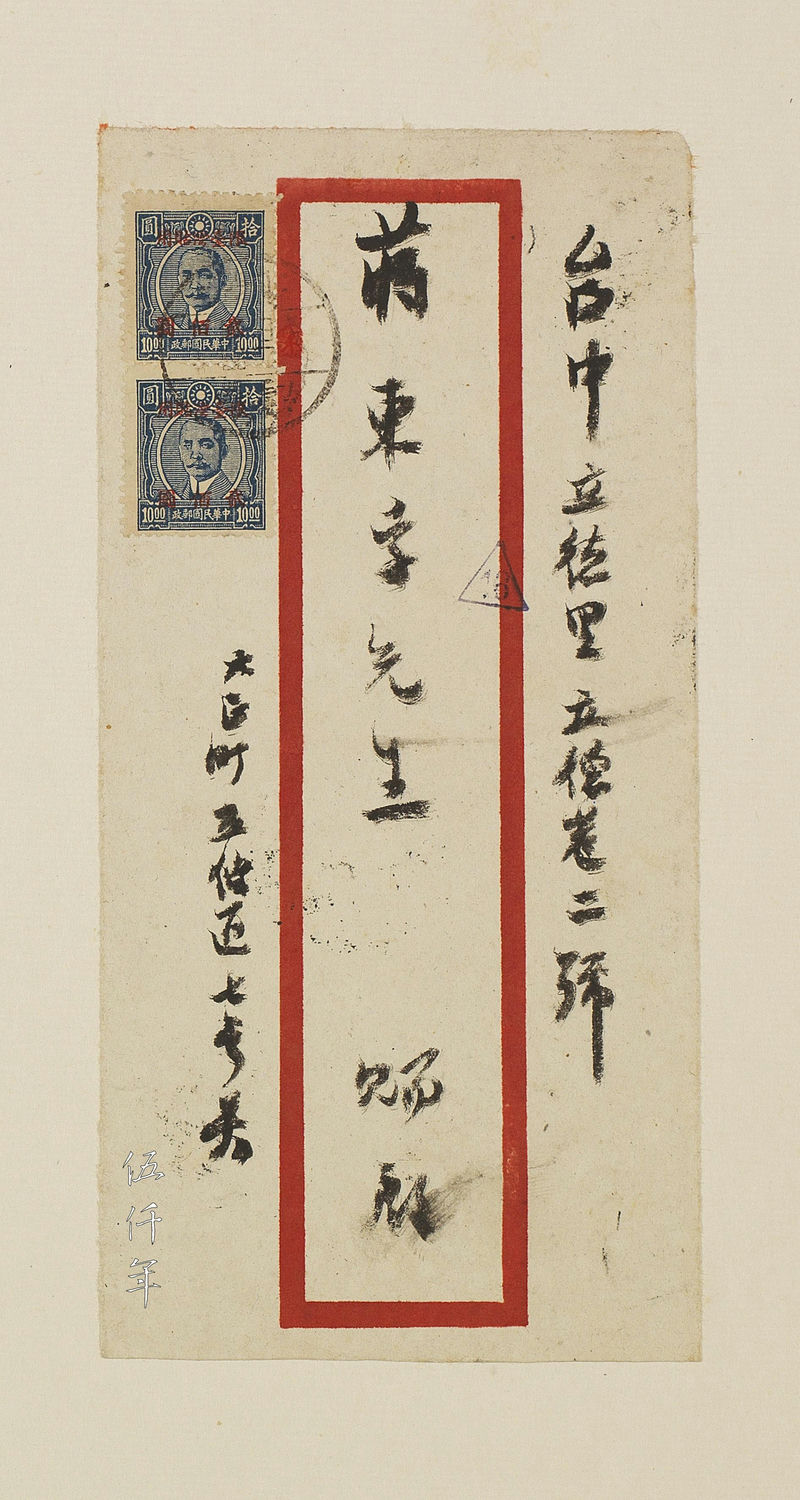
Envelope of second letter to Chiang Tung-fu from Wu Ching-heng
The second letter to Chiang Tung-fu was written between the months of February and April in the 37th year of the Republic (1948). Nanking had not yet fallen to the communists. Wu Ching-heng had arrived in Taipei in February, so the letter was sent from Taipei to Taichung. The letter also comes with an envelope. It is an emotional letter about the tragic political events at the time.
The letter reads:
“Dear Tung-fu,
We had such a thorough conversation in our recent meeting. Even though my hospitality fell short, you still rewarded me with a delicious meal. We are both in the middle of traumatic change, so perhaps it does not matter. The weather in Taiwan is not very good, it fluctuates unpredictably between cold and warm, so one has to be very careful. There are more exotic flowers and wild fruits here, so Caucasians call this place Formosa, ‘Beautiful Island’. It has been praised as a paradise. The idea of paradise is to entice the human dream of haven, but for myself whose body is already near death, I borrow this place like a tatami, dreaming of the illusive world, and I am content. There has not been any accomplished individual from the mainland who does not console oneself with drinking, which is turning into a fashion, and feeling weary of life. Recently certificates of entry are required, there are gangs of scalpers who disregard fair play. Whenever there is news of peace negotiations, fewer come and many more depart. But caution is essential. I wrote a playful verse:
Hard to encounter open smile in life,
But the mouth opens with each peace talk.
Breeding cats and rats in the same burrow,
So laughable your mouth will soon be crooked.
With each day people change, such as the students who protested in Nanking. Again many died, they were loyally following the communists. The communists are also moving eastward and westward, towards Yang-chou (揚州), An-ch’ing (安慶), Sha-shih (沙市), with large numbers crossing the Yangtze River. Although we may be weary of paradise, remember it is only to escape death. There is no need for Sun Moon Lake, Ali Mountain, again a bit of self-mockery. No interest to travel at all, thank you, but no thank you. When Taichung has some good rain, perhaps reading a lot of newspapers will bring relief from boredom in the evenings. I think one should open the mouth to smile. Take good care.
Yours respectfully,
Ching-heng, in the evening of the 3rd.”

A Commendation to Accompany the Portrait of Madame Ch’en-Mother of the Chiang Family
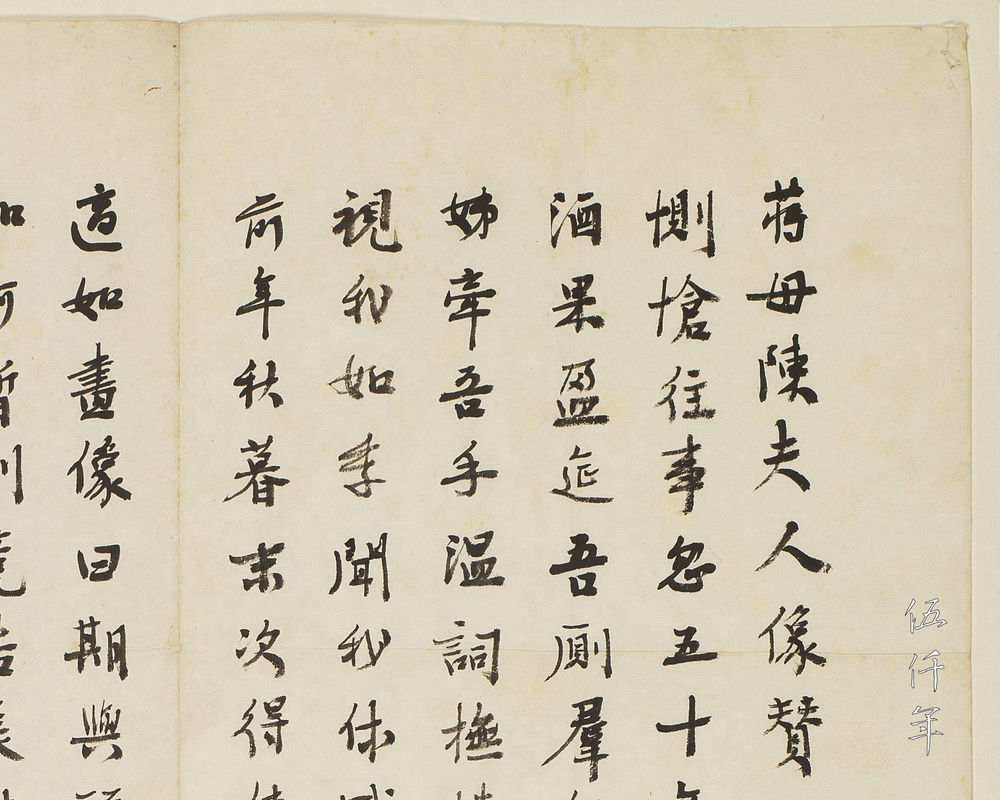
Detail of A Commendation to Accompany the Portrait of Madame Ch’en-Mother of the Chiang Family
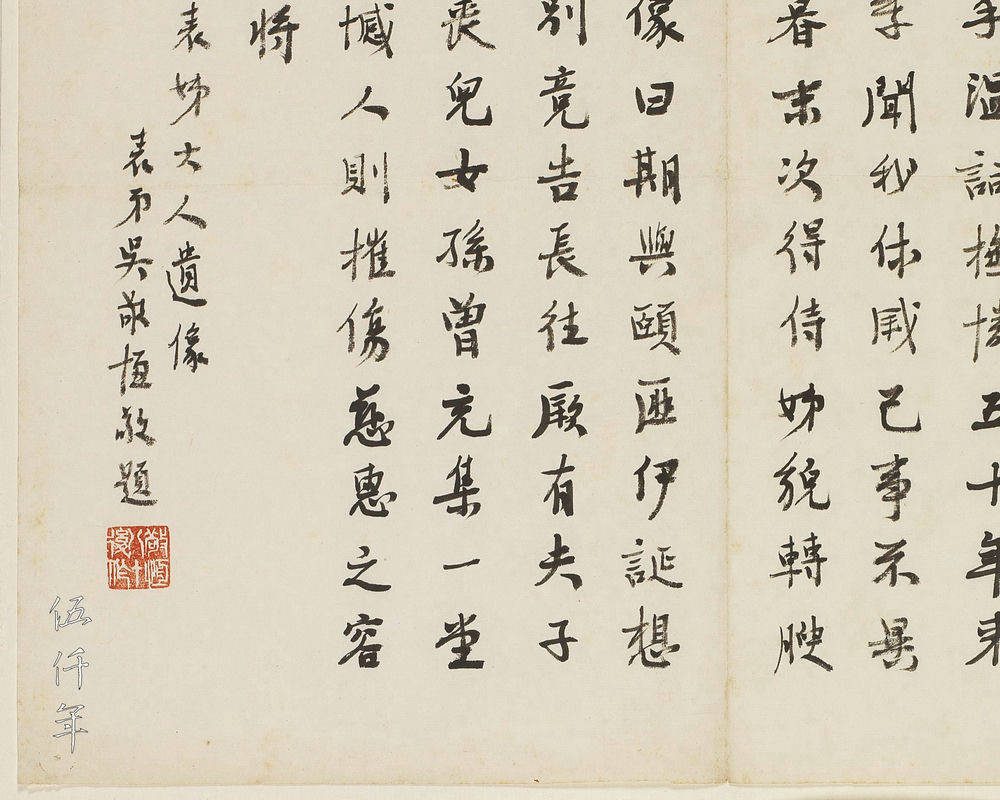
Detail of A Commendation to Accompany the Portrait of Madame Ch’en-Mother of the Chiang Family
Inserted in the back of the album are two sheets of commendations composed and calligraphed by Wu Ching-heng. The first commendation is titled: A Commendation to Accompany the Portrait of Madame Ch’en-Mother of the Chiang Family (蔣母陳夫人像贊). The second commendation is titled: A Commendation to Accompany the Portrait of Mr. Chiang Sheng-yang (蔣公聲揚像贊).
Regarding the first sheet A Commendation to Accompany the Portrait of Madame Ch’en-Mother of the Chiang Family, Madame Ch’en was the cousin of Wu Ching-heng. It reads:
Mournful memories,
Fifty years in a flash.
Offerings of wedding wishes,
Wine, fruits and feasting.
Among many children,
Money asked to be amulets.
You held my hand,
Gentle words of empathy.
Five decades in full,
You treated me like brother.
My joy and sorrow
As if they were yours..
Late Autumn last year,
Once more I served you.
Your face turned thin,
Same in the portrait.
To reach a hundred
Not quite your fantasy.
A temporary parting,
An eternal departure.
Luckily your husband
Arranged the funeral.
Children and grandchildren
Filled up the hall.
You bore no regret,
Only grief for the living.
Your kind-hearted expression,
A manner for remembrance.
To accompany the portrait of Madame Ch’en of the Chiang family, my second elder cousin.
Respectfully inscribed by cousin Wu Ching-heng.
Seal impression: “A work by Ching-heng after eighty”.
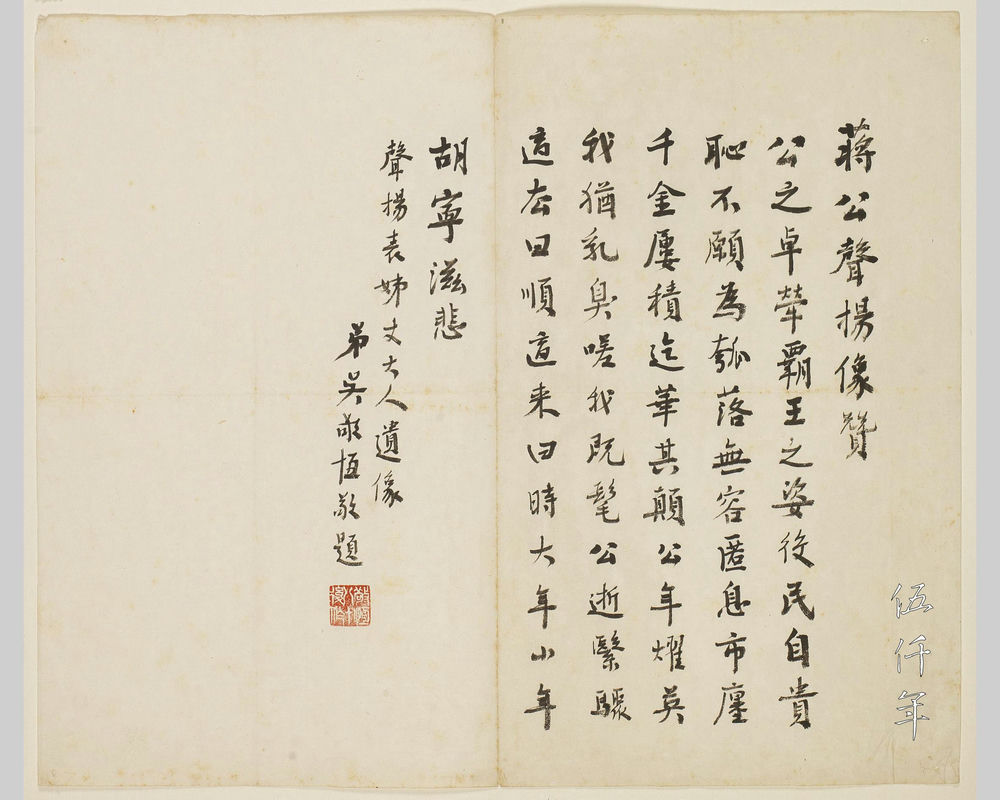
A Commendation to Accompany the Portrait of Mr. Chiang Sheng-yang
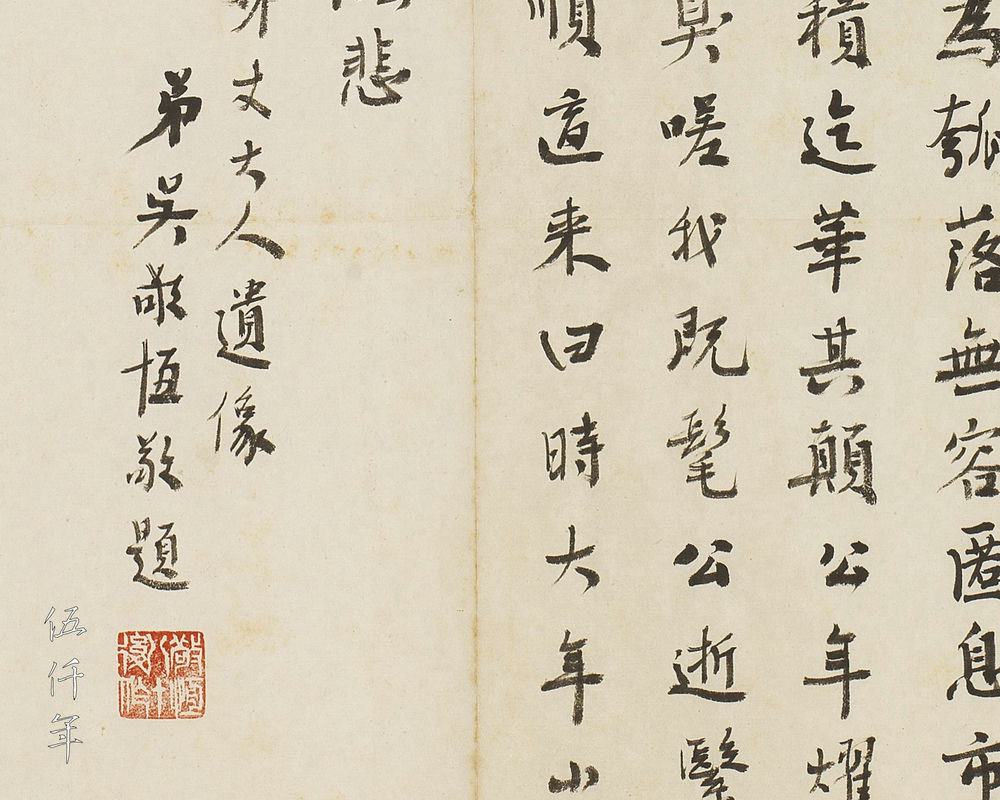
Detail of A Commendation to Accompany the Portrait of Mr. Chiang Sheng-yang
Regarding the second sheet A Commendation to Accompany the Portrait of Mr. Chiang Sheng-yang, Mr. Chiang Sheng-yang was the husband of the second elder cousin. It reads:
You rose above men,
With bearing of a king.
To gain from others’ work,
Too shameful to accept.
Life upon hard times,
Refuge sought in city square.
Wealth piled up slowly,
Yet to reach its peak.
In your prime years,
I was only a child.
I sigh about my age,
And a death too abrupt.
To leave was smooth,
To come was timely.
In the festivities of New Year ,
Why such endless sorrow.
The portrait of Sheng-yang, husband of my cousin.
Respectfully inscribed by younger brother Ching-heng.
Seal impression: “A work by Ching-heng after eighty”.

Portrait of President Chiang Kai-shek and Mr. Wu Ching-heng
The late President Chiang Kai-shek can be regarded as the true confidant of Wu Ching-heng in his entire life. On 25 March in the 53rd year of the Republic (1964), at the centenary of his birth, President Chiang delivered the following address:
“Mr. Wu was a great contemporary literary figure, philosopher, educator, calligrapher, and social reformer of our country. Not only was he a seer of the national revolution, but also a saint of the revolution especially esteemed by our Founding Father Dr. Sun Yat-sen. He had profound knowledge of Chinese learning, and during his studies in England and France, he also absorbed various political, social, and cultural ideas from those countries. He met Dr. Sun in Europe seven years before the Republic and they formed a deep friendship. Subsequently he joined the national revolution under Dr. Sun’s leadership and became a loyal comrade of the revolutionary organization T’ung-meng Society. As early as the 10th year before the Republic, he founded the Patriotic Study Society in Shanghai, using vivid language to advocate the revolutionary theories of the expulsion of Manchu oppressors and the revival of China. He influenced large numbers of young people both domestically and internationally. As a result, he came into conflict with the Ch’ing dynasty, leading to the Su Pao (蘇報) case in Shanghai in the 9th year before the Republic, forcing him to flee overseas. Every time I saw Dr. Sun and Mr. Wu meet, whether in private or at meetings, Dr. Sun always showed the utmost respect for him as a teacher. Hence comrades in our party all paid respect to him as a teacher. I have especially benefitted lifelong for his guidances and teachings. Whenever there were doubts or difficult matters in the party and the country, it was always his advice that we sought first, and his words often settled the issue. Hence, many of our comrades would later say, ‘Let’s ask Mr. Wu for divination first’. Our party’s reverence for Mr. Wu was as deep as that. After the establishment of the Republic, he did not take up official positions, but continued to influence the times with his writings. In the 2nd year of the Republic, following the failure of our party’s campaign against Yuan Shi-kai’s conspiracy to become emperor, he returned to Europe to study the deficiencies in our country’s cultural education and language. He was willing to dedicate his life to cultural and educational endeavors. He dedicated his entire life for the country and for the revolution, yet the most significant contributions he made were during this period.
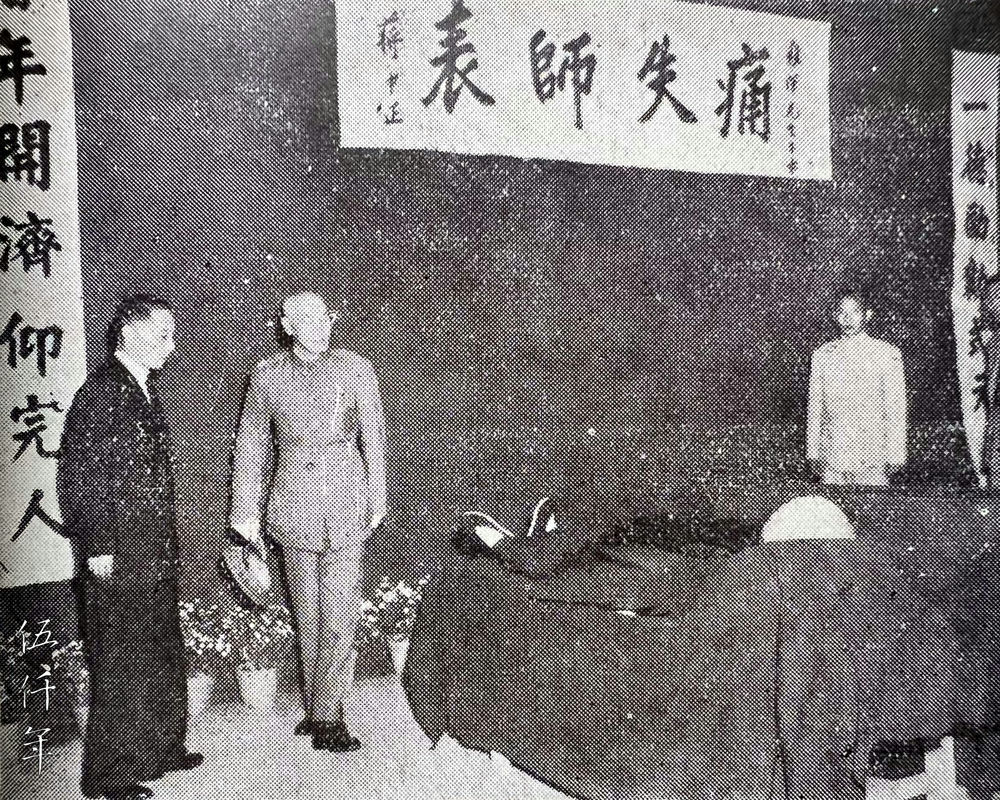
President Chiang Kai-shek attending the viewing at the funeral of Wu Ching-heng
Mr. Wu was alone and poor in his youth. He maintained a simple and modest demeanor, living in a pure and humble style up to old age. His integrity and strength of character earned him high respect, and his educational and decision-making methods were often characterized by humour and wit, leading people to examine themselves to gain insight. He was never stern or used harsh words. Since throughout his life, he had no concealment, behaving naturally and was consistently impartial, without self-interest, people readily accepted his guidance and willingly followed his teaching. He always regarded service to the national revolution as his lifelong responsibility and was unwavering in his dedication, therefore he believed that he should not refrain from participating in important party and national matters. However he maintained a carefree attitude in his personal life. During critical moments of peril for the nation and the people, Mr. Wu always stood up, full of righteousness and integrity, without hypocrisy, embodying Mencius’s saying, ‘I am skillful in nourishing my vast spirit of righteousness and reason (我善養吾浩然之氣)’ and ‘If I reflect on myself and find myself to be right, then even if it be an army of a hundred thousand, I will go forward (自反而縮雖千萬人吾往矣)’ . He became a role model for the nation’s intellectuals. In the 15th year of the Republic, when the National Revolutionary Army embarked on the Northern Expedition in Canton, Mr. Wu presided over the flag presentation ceremony. Then in the 16th year of the Republic, when the communists conspired to usurp political authority, he joined with the loyal elders and launched the Anti-Communist Purge. During the War of Resistance against the Japanese, in the long years of arduous struggle, he steadfastly advocated resistance until the end and refused to give in, to combat the plots and wrongdoings of the enemy and its collaborators. All these are just a few of the notable examples. For the rest, he upheld justice, discerned right from wrong, prevented potential calamities, dissolved troubles into nothingness, the flickering light of his virtues, his high-minded words and noble deeds, are too numerous to recount. But he always centered his stance on the security of the nation and the benefit to the people, never involving himself in personal likes, dislikes, grudges, or enmities. This is the essence of Mr. Wu’s unique moral character, one word can become the way for the world, one act can transmit the spirit of an immortal teacher.”
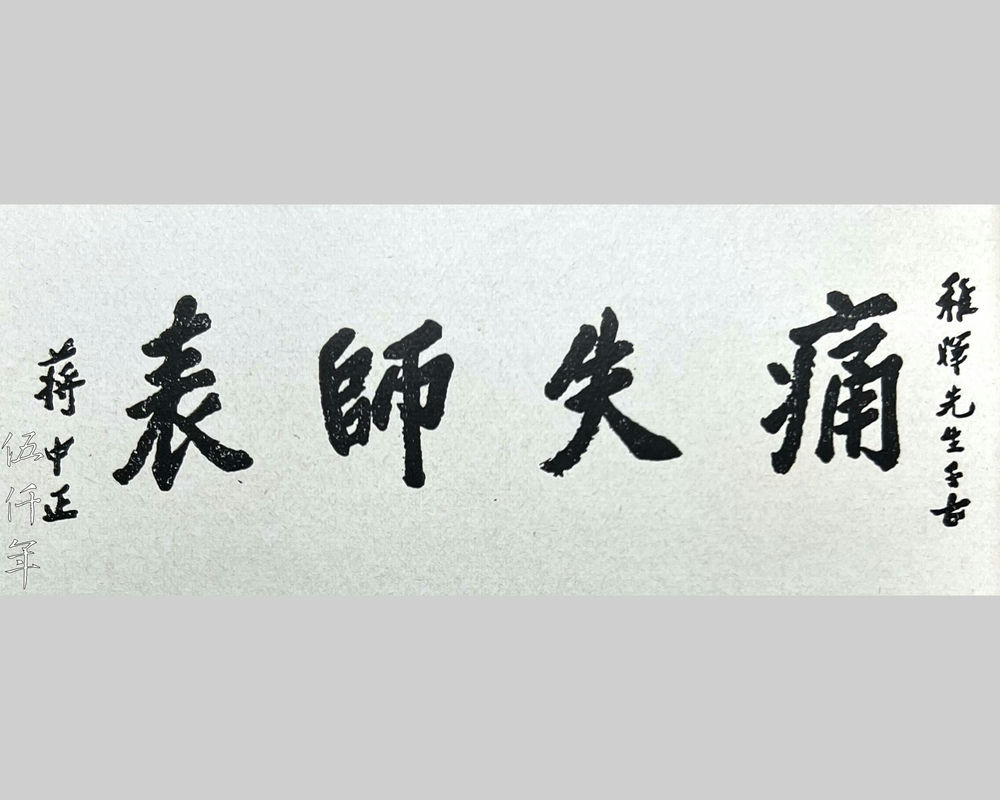
President Chiang Kai-shek wrote the characters: “ I lost an exemplary teacher in sorrow” for the funeral of Wu Ching-heng
During his lifetime, Wu Ching-heng made use of the flag presentation, the constitution presentation and the sea burial to invigorate society, aspiring to cleanse the world. Now, it has been seventy years since he passed away. It is deeply regrettable that there is no worthy news to tell his spirit during ritual offerings, while the country and her people are mired in adversities. Contemplating the vast righteous spirit of Wu Ching-heng, emanating from the personal seal and family letters he left behind, it can very likely rally future generations, to forge once more a new world from turmoil.
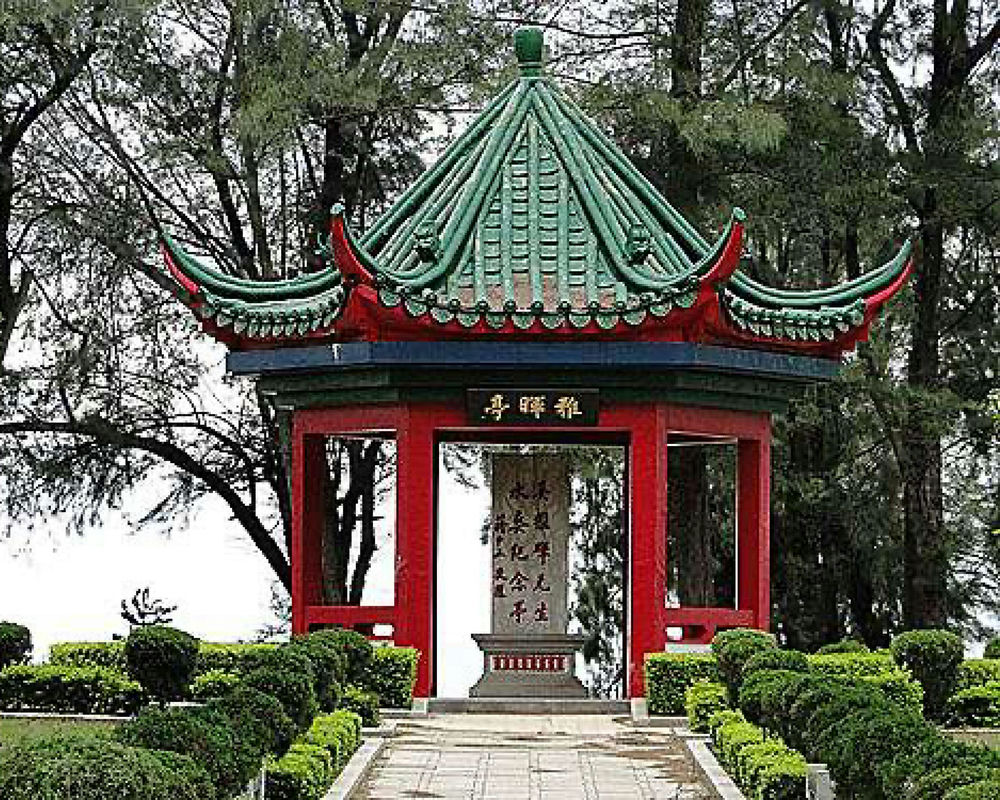
Chih-hui Pavillion in Kinmen commemorating Wu Ching-heng
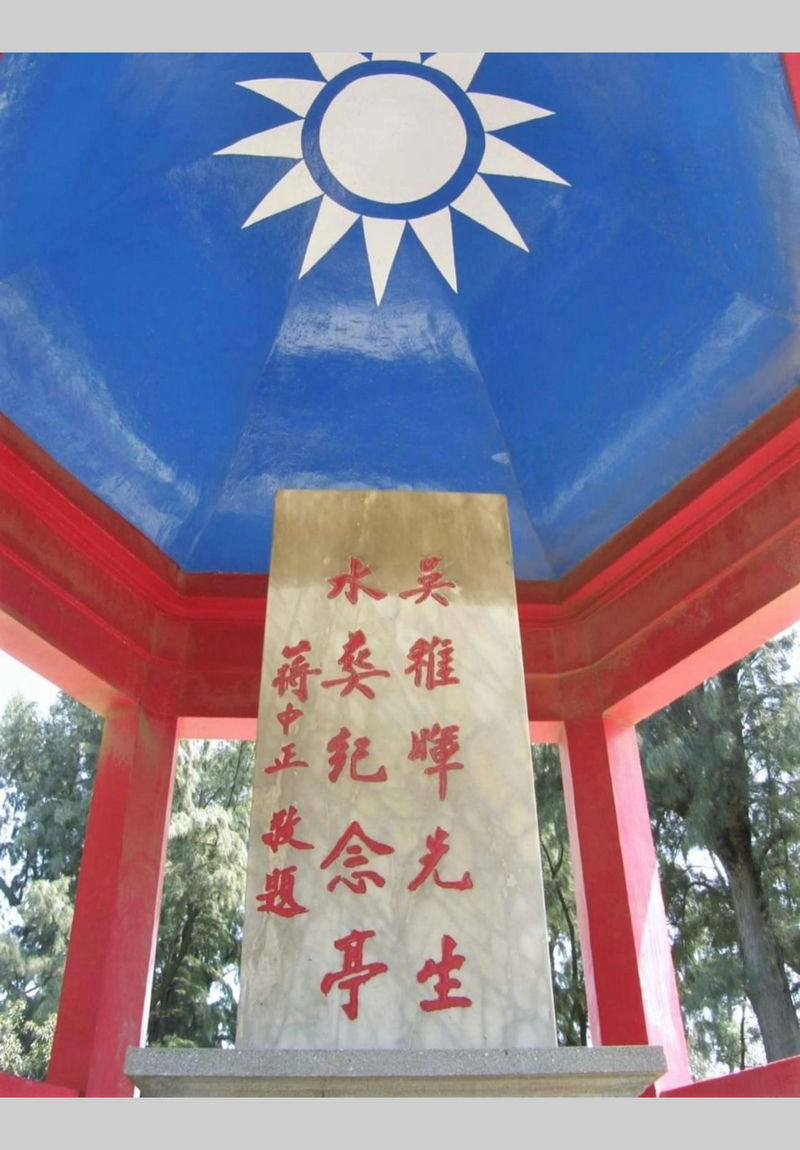
Calligraphy by President Chiang Kai-shek carved on the memorial stele inside Chih-hui Pavillion
Related Contents:
In Memory of Mr. Wu Ching-heng (吳敬恒先生), by the late Ambassador Hu Shih
